The Profound Connection Between Meditation and Emotional Healing
Ever had a tight feeling in your stomach that just doesn’t go away? Or a sudden burst of rage for no apparent reason? In the current time, when life moves fast, we don’t even have the time to introspect on our feelings. This leads us to carry the same old pain or everyday stress without knowing how to be free of them. These feelings are valid and have large impact on other parts of our lives, like relationships, peace and even physical health. And hence they deserve as much of your attention as physical health.
In the Himalayan Yoga Academy in Kathmandu, Nepal, we believe that wellness isn’t only about muscles or movement, but also feelings and thoughts. Here we teach yoga asana (postures) to help you enhance the flexibility and strength of your body and prioritize meditation, which opens doors to the emotional healing that lasts long. While providing the utmost relaxation far from the noise and stressful routine, it is more of a transformative practice that changes how you carry yourself inside.
Meditation For Emotional Healing: Why It Matters?
Meditation isn’t a magical tool that takes away the difficult emotions overnight. Instead it changes the perspective with which you look at things, which is a very important. We view meditation as a relaxing activity that changes our relationship with ourselves in a positive way. Picture your mind as open sky – clear and bright. Imagine your thoughts and emotions that pass through as weather patterns – sadness as dark clouds, anger as thunder and so on. Now instead of getting swept up with the weather, meditation helps you ground yourself. This is the point at which the actual healing begins.
Take a look into how it works:
1. Regulating the Nervous System: From Flight-or-Fight to Rest-and-Digest
When life gets overwhelming or negative emotions flare up, our body kicks off the sympathetic nervous system into high gear. This pumps out cortisol along with the adrenaline – the “flight-or-fight” response. Hence, if the stress drags on for long, you stay locked on in this harmful setting.
How Meditation Helps:
Meditating turns on your parasympathetic nervous system, which handles the “rest-and-digest” part of your body. When we sit still, breathe and slowly settle, we signal our body it is safe to calm down. This controlled slowdown helps keep our feelings steady and ultimately helps to regulate our emotion in the long run.
2. Building Emotional Resilience: Creating a Pause
When feelings hit, we often tend to act without thinking. By practicing meditation, we build awareness – creating an important pause between your trigger and response.
How Meditation Helps:
When you meditate, you gain the power to make real choices about your reactions. Not letting your rage or grief drag you, meditation helps you observe and truly understand it and in turn yourself. It helps you react when you want to, with intention. That’s how meditation helps you stay emotionally resilient.
3. Processing Stored Emotions: Releasing the Body’s Memory
When you go through excess and continuous distress and trauma, you don’t only keep them in your mind, they stick in the body. Usually showing up as physical tension, they also cause pain or stiffness in parts like shoulders, jaw, chest, or gut.
How Meditation Helps:
During meditation, especially with techniques like body scan, you pay kind attention to those tense spots. Noticing those sensations calmly, the body is allowed to start fading the tension on its own – calmly loosening the built-up emotions bit by bit.
Practical Techniques to Begin Your Healing Journey
You can incorporate these healing habits into your life starting today:
Mindful breathing (5-10 minutes): Sit down somewhere comfortable and pay close attention to the natural flow of your breath. Take note of any feeling or emotion you go through (“I’m feeling stressed”) without any judgement. Then drift back to focusing on your breathing flow. This is what helps you regulate your emotions when things get heavy.
Body Scan Meditation (10-15 minutes): Lie back while gently focusing on every bit of your body – from your feet up to the crown. Pay attention to any feeling – buzzing, heat or tightness and notice them without fixing or adjusting anything. If you do this, you’ll enhance the mind-body connection, helping you release the tension.
Loving – Kindness Meditation (Metta) (10 minutes): This is a heart-healing practice that lets you be kind towards yourself as well as others. Repeat kind things quietly – start with you (“May I be happy, may I be healthy”), then move on to someone close, or even someone you don’t get along well with. With this, you build self-compassion while slowly breaking down anger.
Deepen your Practice with us in Nepal
While we actively encourage personal practice in your daily life, we also recommend personally guided practice with us. A structured, hand-on course can speed up your healing journey exponentially. At our Himalayan Yoga Academy, a place full of positive energy, we build every activity carefully around deep meditation practices:
Yoga Teacher Training: Our trainings don’t stop at physical alignment, we go beyond. We dig into understanding the meditation and pranayama (breath work) on a deeper level. We make you ready to guide others – also grasping the healing effects on mood. Each of our session builds real insight, helping you see past the basics into practical use.
Yoga Retreat Packages: If you’re looking for a break plus a fresh start, our retreats offer you a calm space to dive deeply into healing practice. Without everyday distractions, you’re free to unwind – guided by our skilled teachers in the tranquil setting of the Himalayas.
Your Journey to Wholeness Begins with a Single Breath
Healing emotions is about changing the lifestyle, rather than about hitting some end goal. Instead of rushing, slowly understanding who you are, and accepting yourself with peace and gratefulness. Progressing with self-love, patience, and consistency, slowly you change yourself and your life for the better. With meditation, you open up space inside – letting each part of yourself just exist, without judgement – turning chaos into clarity and hurt into long-lasting peace.
Ready to transform yourself and your life? Join us at the Himalayan Yoga Academy to start your learning journey with our experts.
Check out our Yoga Teacher Training in Nepal to learn the lasting transformative skills.
Discover our Transformative Yoga Retreat Packages for real healing through full-on experience.
Got a question? Feel free to Contact Us. We’re happy to help and support however we can.
The Benefits of Morning Meditation: Start Your Day with Clarity and Transform Your Life
Ever rise with your head spinning, stuck on chores waiting while you’re still under the covers? Life moves fast these days, so it’s no surprise that dawn feels like panic mode kicking in. Yet imagine flipping the script – just by sitting quietly for a short stretch when everyone else is asleep.
Over at the Himalayan Yoga Academy – sitting right where yoga began – we show folks how starting early shapes a calm, focused, day with real direction. Waking up quiet, sitting still: it’s an easy habit that clears your head, steadies your mood. Yet if you’re looking to go further, this small routine kicks off something bigger – leading into our Yoga Teacher Training or unfolding gently through a retreat experience.
Why Meditate in the Morning?
The early part of the day feels different. Your thoughts are clear, calm, yet wide open – no noise crowding them like later on. That’s why it works so well to lay down your plan right then. Swap scrolling for sitting still, breathe instead of reacting, and suddenly you’re steering your focus rather than drifting with distractions.
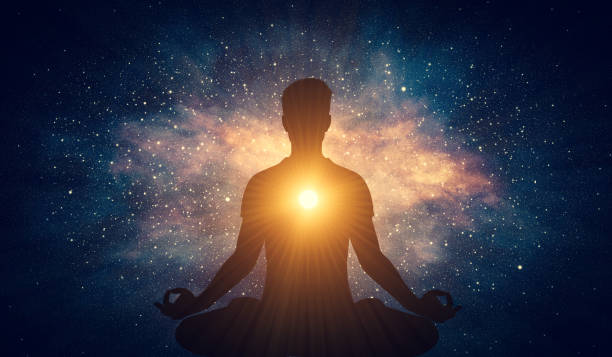
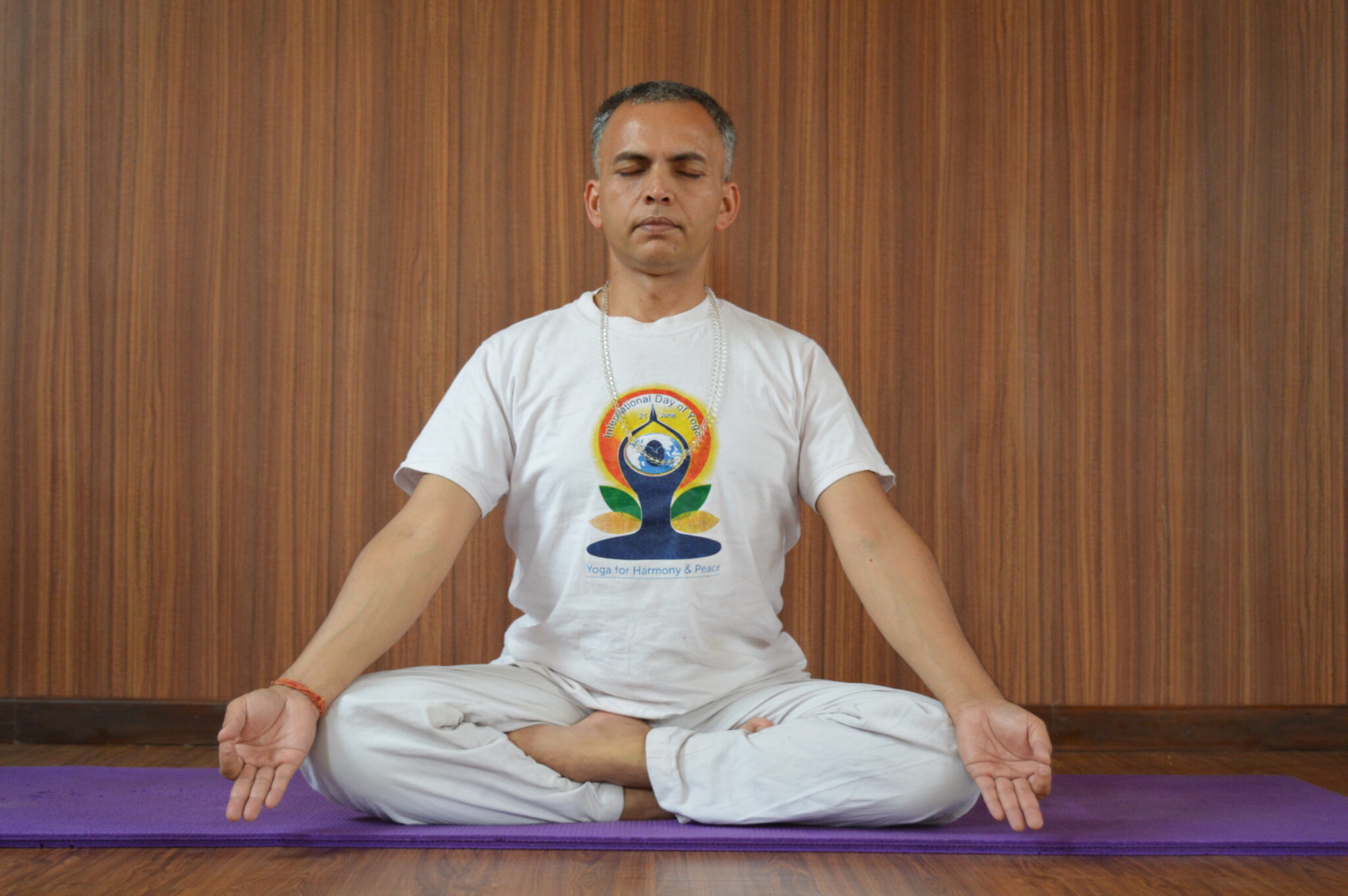
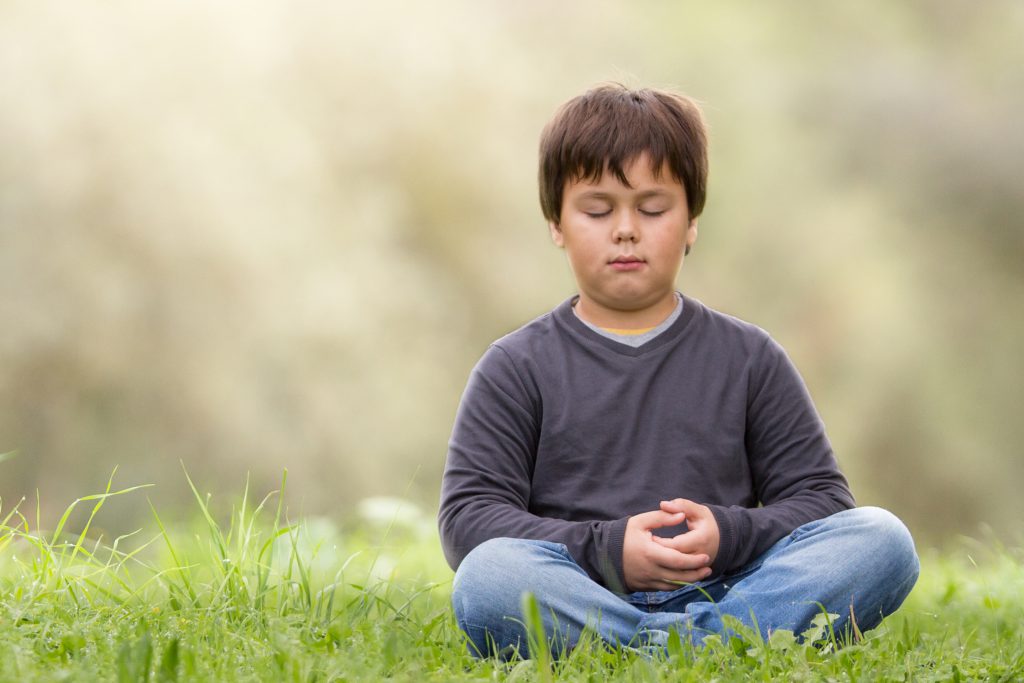
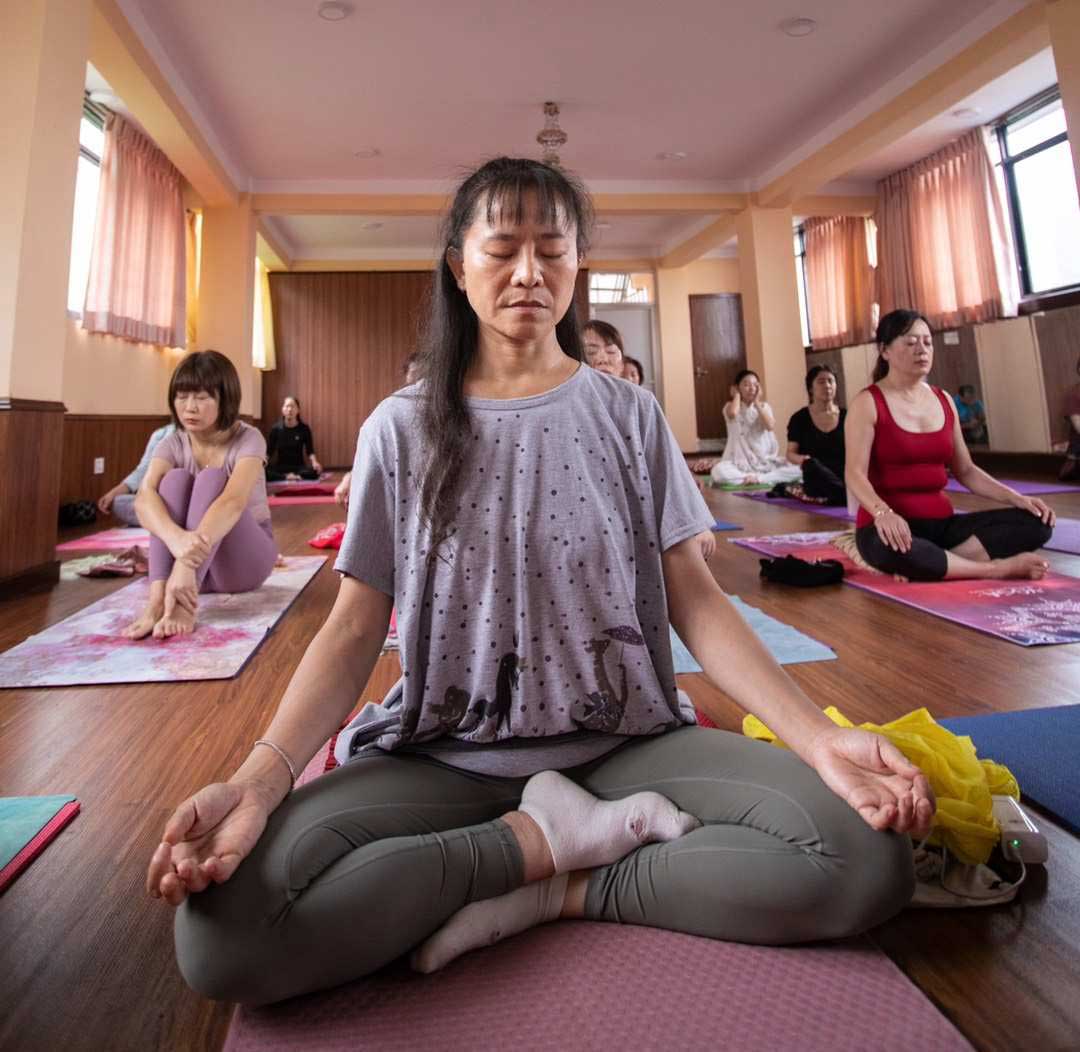
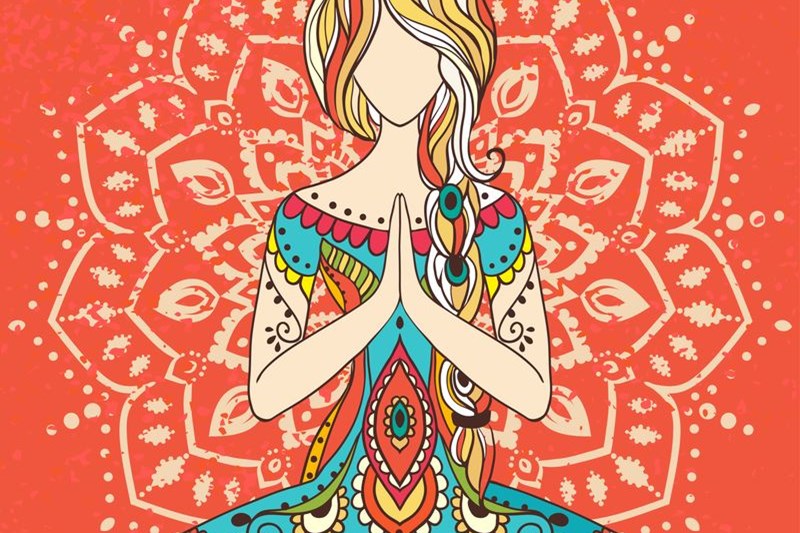
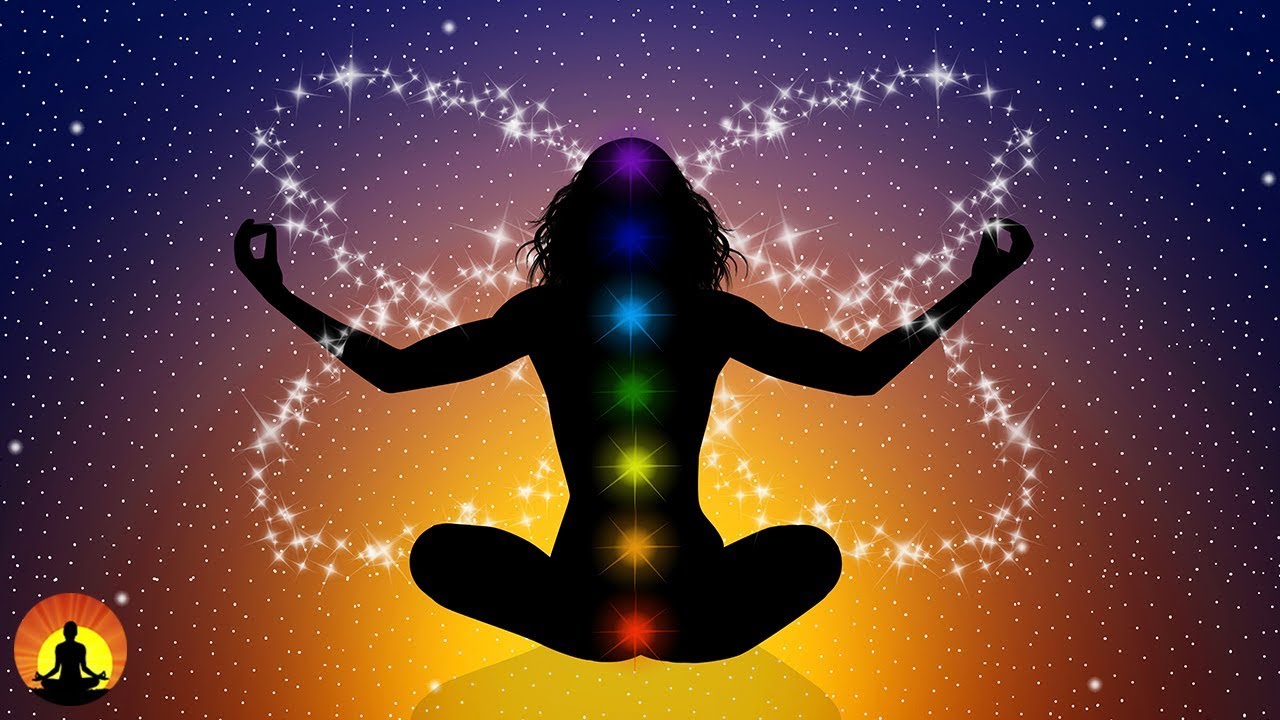
5 Powerful Benefits of a Morning Meditation Practice
1. Unshakable Mental Clarity and Focus
Meditation gives your mind a fresh start. When you sit quietly, old stresses and future fears slowly fade away. As that happens, confusion lifts – your thoughts get clearer, attention improves; choices feel easier. You move through the day quieter inside, more balanced, grounded.
2. A Natural Shield Against Stress and Anxiety
Beginning each morning with quiet focus builds a mental cushion that helps handle tough moments. Instead of spikes in stress chemicals, your system eases into calm mode early on. When pressure shows up later, it doesn’t throw you sideways – your reactions stay steady, even when things get messy. Rather than flipping into fear, you move through problems smoothly.
3. A Day Fueled by Purpose, Not Chance
A morning moment of stillness works like a personal compass. Use this calm to plant a small aim – a sankalpa – like “I’ll stay gentle today,” or “I’ll walk with thanks.” Doing so turns ordinary hours into something guided, not just tossed by chance.
4. Deepened Mind-Body Connection
While you sit quietly, your attention to what’s happening right now gets stronger. Because of this shift, when you move through poses later, each one feels clearer, steadier, better connected. Instead of simply going through motions, you actually live inside every stretch and breath.
5. Sustainable Energy (Better Than Caffeine!)
Though coffee zaps you awake – then dumps you flat, meditation boosts energy that sticks around. It quiets your nerves while ramping up oxygen, fueling both brain and body without the fade. You end up sharp, calm, actually recharged – not just wired on fumes.
How to Start Your Morning Meditation Practice in 5 Simple Steps
You don’t have to wait for quiet moments. Begin right now – just jump in
- Find Your Spot – Pick somewhere calm, cozy.
- Stick to 5 minutes – just go for five or ten. Doing it regularly matters more than how long you do it.
- Sit easy – on a pillow with your back upright or just in a seat. Stay awake but loose.
- Pay attention to how you breathe – shut your eyes, then just notice the way air moves in and out without changing it.
- Every time thoughts drift – sure, they will – just bring attention back to breathing, easy-like, no blame.
From Morning Ritual to Life Transformation: Deepen Your Journey with Us
Though doing it on your own helps, being part of a focused space brings deeper change that sticks. That’s when your journey with Himalayan Yoga Academy really starts moving forward.
Option 1: Immerse Yourself in a Yoga Retreat
Picture this – your usual morning calm, only now it’s way up in the Himalayas, where quiet meets raw nature. Not at home, but out there, breathing with mountains around. These yoga trips? They’re made to reset you from within while building a daily rhythm that sticks. No fluff, just real practice in wild stillness.
What You’ll Experience:
- Start your day calm with meditation and yoga – learn hands-on tips right after getting up.
- Take a break from screens – enjoy fresh air instead, eat real meals, or share time with people who lift you up.
- Get back feeling refreshed – bring calm and focus to your everyday routine.
A getaway can help you hit pause – then build your daily routine within a space that shifts your mindset. Instead of just reacting, you’re creating room to grow through fresh surroundings.
Option 2: Master the Art with Yoga Teacher Training
If you’re drawn to live and share yoga – not just do it – our training is your next step. Mornings here start with meditation, no exceptions, shaping everything that follows.
How YTT Will Transform You:
- Get deep into meditation and philosophy – explore breathing techniques, mindfulness practices, while uncovering old-school insights that go past surface-level stuff.
- Cultivate steady self-control – our organized routine turns early mindfulness into a core part of your day.
- Get ready to help others – through practice, you’ll gain the skills to guide meditation sessions while spreading calm thinking far and wide.
- Real roots from the Himalayas – get trained by genuine teachers where yoga began, so your journey gains real meaning.
Your Journey to Clarity Begins with a Single Breath
The road to changing your life begins with one quiet second of awareness. Begin tiny. When you wake up tomorrow, give yourself a short moment of quiet – just five minutes. Take a seat, inhale slowly, while noticing what’s around. Notice how it shifts your mood.
Start by picturing something bold. See how that calm instant could stretch into seven days of deep stillness at a Yoga Retreat – or maybe flip your whole path with a hands-on dive into our Yoga Teacher Training.
Ready to answer the call from within?
Explore our life-enriching [Yoga Training Packages] or take the leap with our accredited [Yoga Teacher Training ]. Let the Himalayas be your guide home to clarity.
Guided or quiet meditation – which fits your vibe?
Over in Kathmandu, right at the Himalayan Yoga Academy, folks regularly ask us – “How should I meditate?” Honestly? No one method fits all. Everyone’s journey inward looks different. Some lean into Guided Meditation; others go quiet and choose Silent Meditation instead.
Still, picking one – what guides your choice? Could it be one’s simply stronger on its own?
In this piece, we’ll look at what sets guided and silent meditation apart, their perks, along with who suits each best. Once you’re through, you’ll clearly know which method fits your present situation and helps you move forward in self-exploration surrounded by Nepal’s peaceful spiritual vibe.
What is Guided Meditation?
Picture this: a kind, thoughtful guide helping you explore the twists and turns of your inner world, step by step. This is what guided meditation’s really about. Instead of going it alone, you follow someone’s voice – live or recorded – who guides your focus, shares calming images, or walks you through a set routine designed to settle the mind.
Key Benefits of Guided Meditation:
- Great for newbies: It lays things out simply, so it’s not overwhelming when you’re just starting meditation. This walkthrough shows you where to direct attention – and when to shift it.
- Calms the mind – using an outside voice gives your busy thoughts something to do, so worries don’t spiral as much.
- Targeted Sessions: You can discover guided sessions aimed at particular aims – say, cutting stress, getting better sleep, showing more compassion, or supporting recovery.
- Deep relaxation: happens when gentle voices pair with soft tunes, helping you unwind fast – while peaceful sounds blend into the background, tension slips away. A calm voice guides you down, merging with quiet melodies that ease your mind – so you drift into stillness without effort.
Who is Guided Meditation For?
Guided meditation might suit you if:
- You’re just starting out with meditation.
- You notice your thoughts drifting way too much yet crave something steady.
- You’re aiming for something clear – maybe handling stress better or getting more rest at night.
- You like routines that have clear steps, while also finding images in your mind helpful.
What is Silent Meditation?
Sitting quietly by yourself – that’s silent meditation – means no one leads you through it. Back in the day, people high up in the Himalayas did this kind of thing all the time. Over here in Nepal, we’ve kept that old habit alive. You might watch your breathing, let ideas come and go without grabbing onto them, or keep saying a word inside your head.
Key Benefits of Silent Meditation:
- You start relying on yourself – figuring out your inner thoughts without help, which helps you grow a steady routine that’s truly yours.
- Becomes clearer inside: when no outside talk’s around, you notice your thoughts, moods, how your mind really works – almost like it shows itself more plainly.
- Boosts self-control and attention: staying sharp without help grows mental strength along with focus over time.
- Finds deep meaning: When noise fades, stillness opens space for real clarity – linking you to your inner truth.
Who is Silent Meditation For?
Silent meditation fits well if:
- You’ve tried meditation a bit, so sitting quietly with your mind doesn’t seem strange.
- You want to grow a stronger feel for inner control, while also building trust in yourself.
- You’re pulled toward age-old meditation ways from the Himalayas – ones passed down through generations, shaped by silence and snow.
- You’re trying to step out of rigid routines into simply existing.
Guided or quiet – here’s a fast look at both
| Feature | Guided Meditation | Silent Meditation |
|---|---|---|
| Structure | High (led by a guide) | Low (self-directed) |
| Best For | Beginners, busy minds | Experienced practitioners, self-discovery |
| Focus | External anchor (voice) | Internal anchor (breath, mantra) |
| Goal | Relaxation, specific outcomes | Insight, discipline, self-awareness |
So, Which One is Right for YOU?
The cool thing? You’re not stuck with just one choice for good – your routine can shift over time. See guided meditation like training wheels: it gives you backup and the push to start moving. When things feel steady, slowly switch over to quiet sessions, opening up the wide space inside your awareness.
Plenty of experienced meditators – even instructors at the Himalayan Yoga Academy in Kathmandu – mix different methods. Instead of sticking to one style, they may start with a guided body scan just to unwind, yet switch to silent Vipassana or repeat mantras during their morning session.
Our Recommendation for a Balanced Practice:
Try guided meditation first: when you’re just starting out, aim for around ten to fifteen minutes each day. That way, you slowly get into a steady routine.
Sit quietly for a couple minutes once the guidance ends – just notice your breathing without saying anything. Instead of talking, stay still and pay attention to each inhale and exhale on your own.
Slowly add more quiet time: once it feels easier, stretch out the silent part when you meditate.
Find a guide in Nepal: If you really want to grow your quiet meditation skills, sitting near seasoned mentors amid the high mountains makes a big difference. Because they’ve walked the path, they can share custom methods while you face tough moments.
Deepen Your Practice at the Himalayan Yoga Academy in Kathmandu
Whether you are taking your first steps or seeking to deepen an existing practice, the spiritual energy of Kathmandu provides the perfect backdrop. Our Yoga and Meditation Retreats in Nepal and Yoga Teacher Training in Nepal are designed to guide you through these profound practices.
Under the guidance of our expert teachers, you will learn the foundational techniques of both guided and silent meditation, discovering the path that best supports your journey to peace, clarity, and ultimate well-being.
Ready to find your perfect meditation match in Nepal? Explore our courses and begin your transformation today.
Meditation for Beginners: Easy Steps to Relax and Clear Your Mind
Ever notice how your thoughts scatter – like a computer struggling with dozens of webpages? It’s dwelling on what happened, fretting over what’s next, alongside constant distractions pulling you away from right now, creating chaos.
At the Himalayan Yoga Academy, we do not shy away from the notion of meditation being incredibly complex emotional for monastic spiritual practices stored in the minds of monks in the mountains; this is so far from the truth! Meditation is an uncomplicated method, relatively easy to practice and an amazing way for anyone to calm the mind and find clarity through the craziness of modern life.
If you are new to meditation…maybe wondering how to even meditate, you have come to the right place! This article will introduce you to some methods to calm your mind and begin your journey of transformation.
Why bother meditating? It really does help – here’s how:
- Meditation dials down cortisol – that main stress chemical your body makes – so you feel calmer. It’s a simple way to ease worry.
- Sharpened focus – it helps your brain settle, so you can pay attention longer.
- Notice your feelings – don’t criticize them. This builds a more peaceful inner life.
- You start noticing how your brain works – the things that set you off, the loops you fall into. It’s like getting a glimpse behind the scenes of you.
- It nudges your body into a calm state – lowering blood pressure while encouraging deep relaxation by engaging its natural restorative processes.

Preparing for Your Practice: Setting the Stage
Meditation doesn’t require gear – that’s its appeal. Still, setting things up beforehand could help you get started easily.
Seek stillness. Locate a peaceful area – one free from disturbances – for just a little while.
Get cozy. Forget fancy poses – a floor cushion works, so does a chair with grounded feet, or your bed will do. Just maintain an upright spine; otherwise, sleep might creep in.
Begin modestly – perhaps five to ten minutes daily. Regularity matters much more than lengthy sessions. As you gain ease, feel free to extend the period. Don’t beat yourself up when your thoughts drift. It happens! Actually, that’s how you meditate – noticing when your attention wanders, then softly guiding it back. So, think of it less like messing up, more like doing the work
3 Simple Meditation Techniques for Beginners
Our school shows budding practitioners three core methods to get going.
1. Mindfulness of Breath
Most meditation starts here. Notice your breathing – let it pull you back to right now.
Here’s how things go.
- Breathe deeply – a couple times. Shut your eyes while you do.
- Notice how breathing feels. Air moves in – through your nose, into your body. Your chest or belly softly lifts then lowers with each inhale and exhale.
- Just notice how your breathing goes – don’t attempt to change a thing.
- A wandering thought? A little itch? Just notice it – name what it is – before softly returning focus to breathing. Be kind to yourself while doing so.
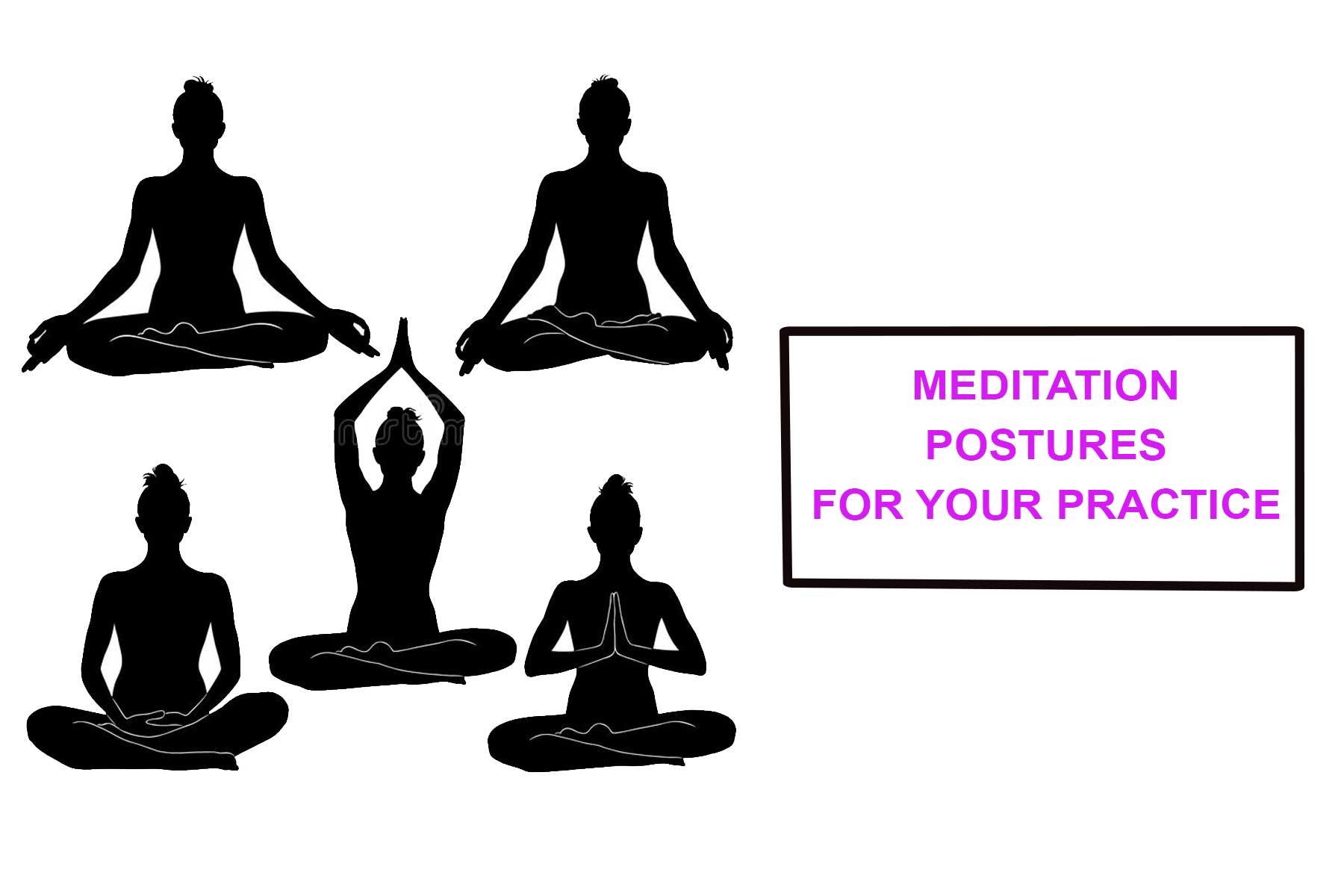
2. Body Scan Meditation
It really helps to loosen up tight muscles while also letting you tune into what your body feels – because stress tends to get stored there.
Here’s how things unfold
- Breathe deeply, then shut your eyelids. Let yourself relax.
- Feel your toes. What do they tell you? Perhaps a little tingle, maybe heat, cold, or simply…nothing. Just notice.
- Notice your body. Begin at your toes, then travel upward – feet, legs, torso… continue until awareness reaches the crown of your head.
- Take time with each spot, just noticing things as they are. Should you sense tightness, picture your breathing going there – easing it open.
3. Mantra Meditation
Repeating a word or sound – a mantra – can help quiet a racing mind. It offers something uncomplicated to hold your attention. For instance, at the Himalayan Yoga Academy, “So Hum” (“I am That”) is frequently used because it’s understood everywhere
Getting things done: a quick guide
- Settle in. Let your eyelids drift shut.
- Breathe in, whispering “So” within yourself; breathe out, letting a quiet “Hum” follow. Continue this rhythm – a gentle inner echo with each breath.
- Breathe in… “So”
- Breathe out… “Hum”
- Just let the words settle into a natural pace, moving alongside each inhale and exhale. Should thoughts drift by, simply guide attention back to their echo.
Your Journey Starts Now
Meditation isn’t about reaching an end point – it’s the path itself. Expect some moments of calm, yet also brace for times when your mind feels scattered, even turbulent. Truly, either choice works well. Just being present for your own life – that’s the key thing.
The Himalayan Yoga Academy helps people begin – even if they’re brand new – then grow toward deeper yoga work. Should a pull towards the origins of yoga resonate within you, consider joining our Yoga Teacher Training or one of our Meditation Retreats.
May your journey unfold with calm, offering a clear view ahead.
Ever felt a shift during meditation? Drop your thoughts – or ask anything – in the comments. Let’s talk about it!
Also Read,
Sound Healing Retreats in Nepal
The Sound Healing Retreats in Nepal function as a spiritual refuge which stands in the peaceful lower mountain areas of the Himalayan range to help people find inner peace and stability. The mountain breeze carries prayer flags through the air, while nature’s unending song leads you to discover deep relaxation and emotional freedom and complete inner balance.
The Himalayan Yoga Academy teaches sound healing as a complete practice which connects physical existence to mental and spiritual health through healing vibrations. The sessions use ancient Himalayan singing bowls and gongs along with sacred mantras to help participants activate their subtle energies and release stress while restoring their natural frequency to achieve peace and vitality.
The Himalayan Yoga Academy offers sound healing retreats in Nepal which combine modern mindfulness with ancient Himalayan wisdom to help people achieve spiritual renewal and emotional healing and self-connection through vibrational wellness.

What is Sound Healing?
Sound healing functions as a treatment approach which employs sounds emitted from singing bowls and gongs and tuning forks as well as human voices to restore energy field balance in the body. Each sound tone begins at its own specific frequency, which harmonizes with the frequency patterns of individual energy centers or chakras in the human body. The body lets go of stress and emotional blockages, and the mind becomes calm and aware when we align ourselves with the sound frequency.
At Himalayan Yoga Academy, we integrate sound healing with yoga practice and meditation and mindfulness to create a healing retreat for full restoration.
Why Select Nepal for Sound Healing Retreats
The spiritual awakening center of Nepal exists because it holds the birthplace of Buddha and the Himalayas. The place offers a peaceful environment with sacred energy and friendly people which makes it suitable for healing and self-exploration and meditation.
When you come for a sound healing retreat in Nepal, you will find:
- The mountains produce a gentle rhythm which blends with the soothing sounds of nature.
- Your healing process gets support from daily yoga and meditation practices.
- The Himalayan masters will teach you sound therapy through their professional training.
- Your body and mind will undergo detoxification because of a vegetarian diet that promotes restoration.
Sound Healing at Himalayan Yoga Academy
The Himalayan Yoga Academy stands as a premier wellness center in Nepal which provides sound healing retreats and educational programs for people at all levels of practice. The certified sound healers at this center use Tibetan singing bowls and crystal bowls together with sacred mantras to help people release stress and activate their energy flow.
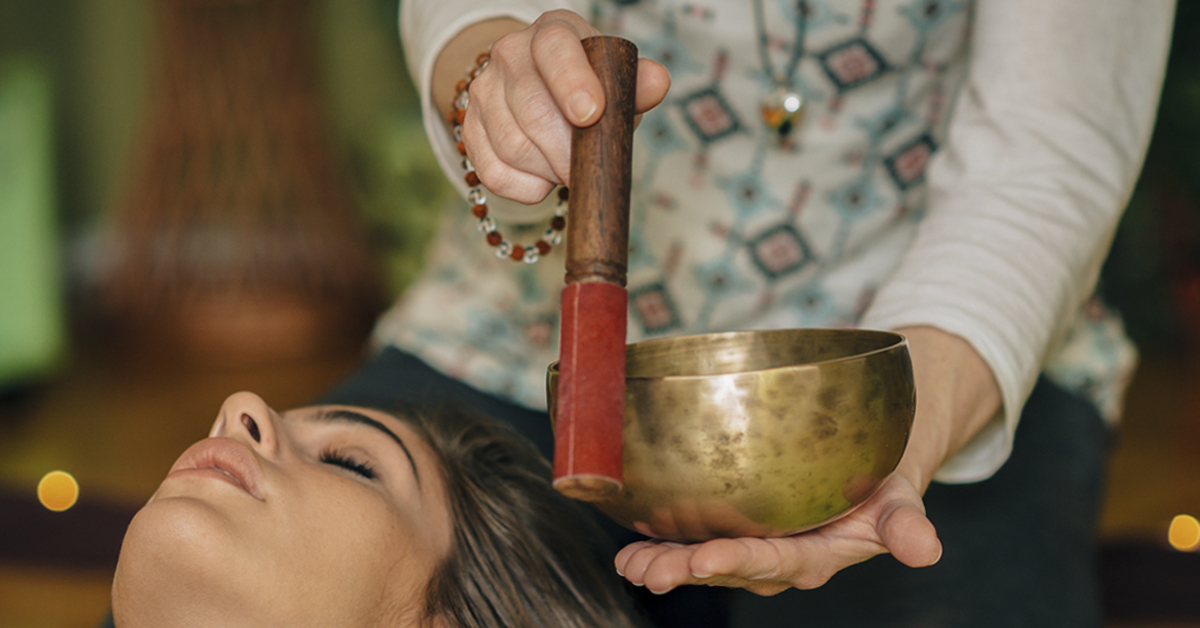
During your retreat, you will receive the following benefits:
- We start a day with basic yoga positions and controlled breathing exercises during the morning yoga and meditation practice.
- Sound Bath Sessions – The sound waves will lead you to discover your natural healing power.
- Participants learn about sound frequencies through workshops and sharing circles to discover how these frequencies affect both emotions and energy states.
- The Himalayan wilderness offers visitors the opportunity to experience mindful walking and complete mountain silence.
- Holistic Healing Therapies – Combine sound healing with Ayurveda, Reiki, and chakra balancing.
The advantages extend past the state of relaxation. A sound healing retreat provides these benefits to its participants: Stress and anxiety reduction along with better sleep quality and enhanced overall vitality and emotional blockage release and improved focus and clarity and creativity and deeper spiritual connection and inner peace and chakra balance and energy flow restoration.
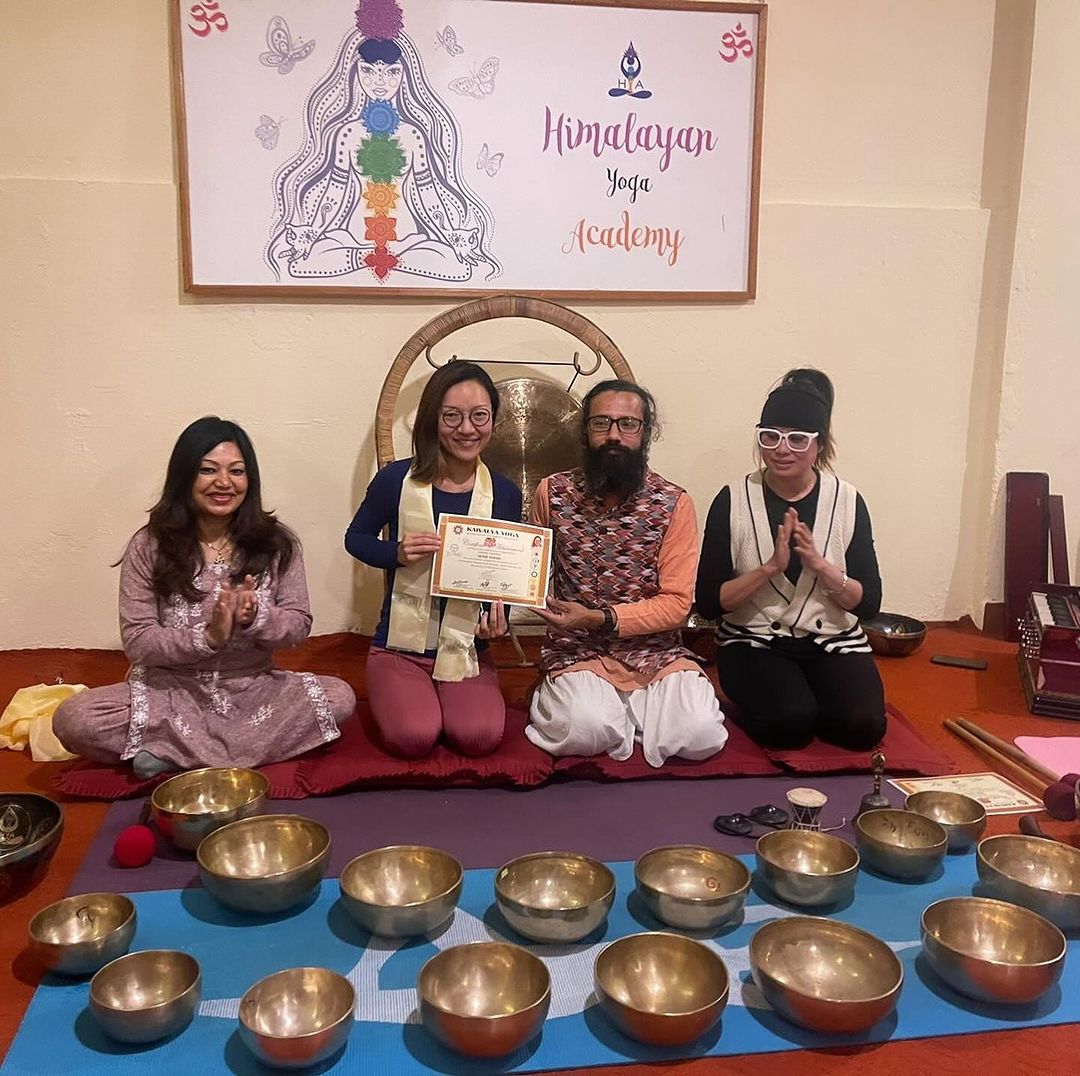
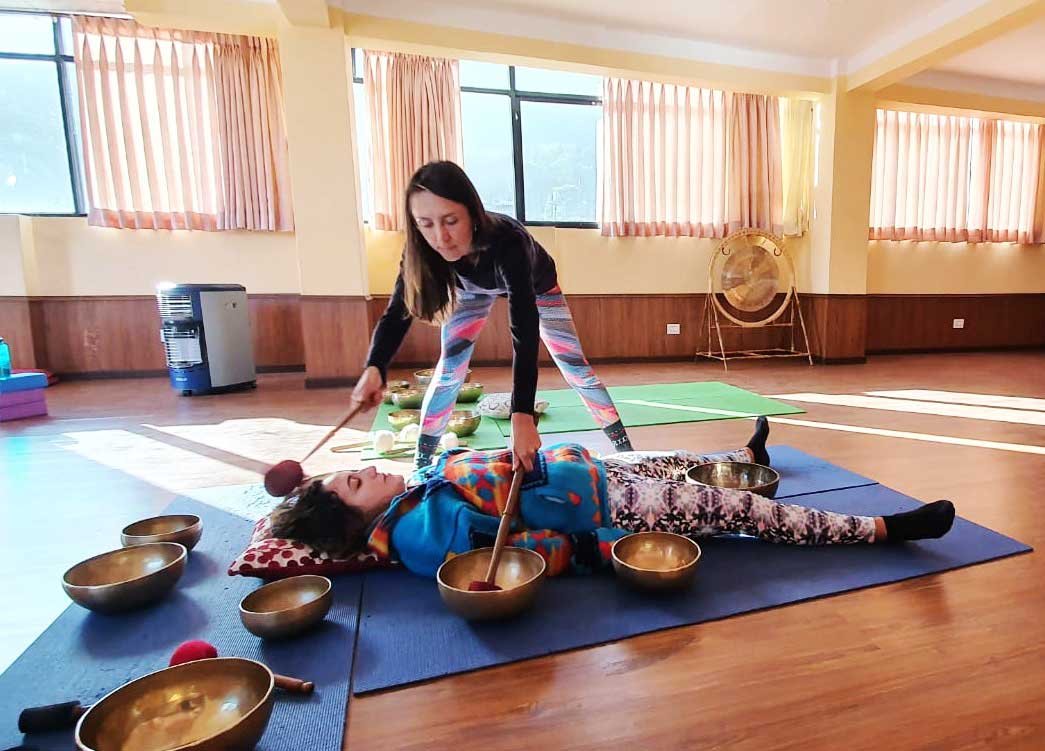
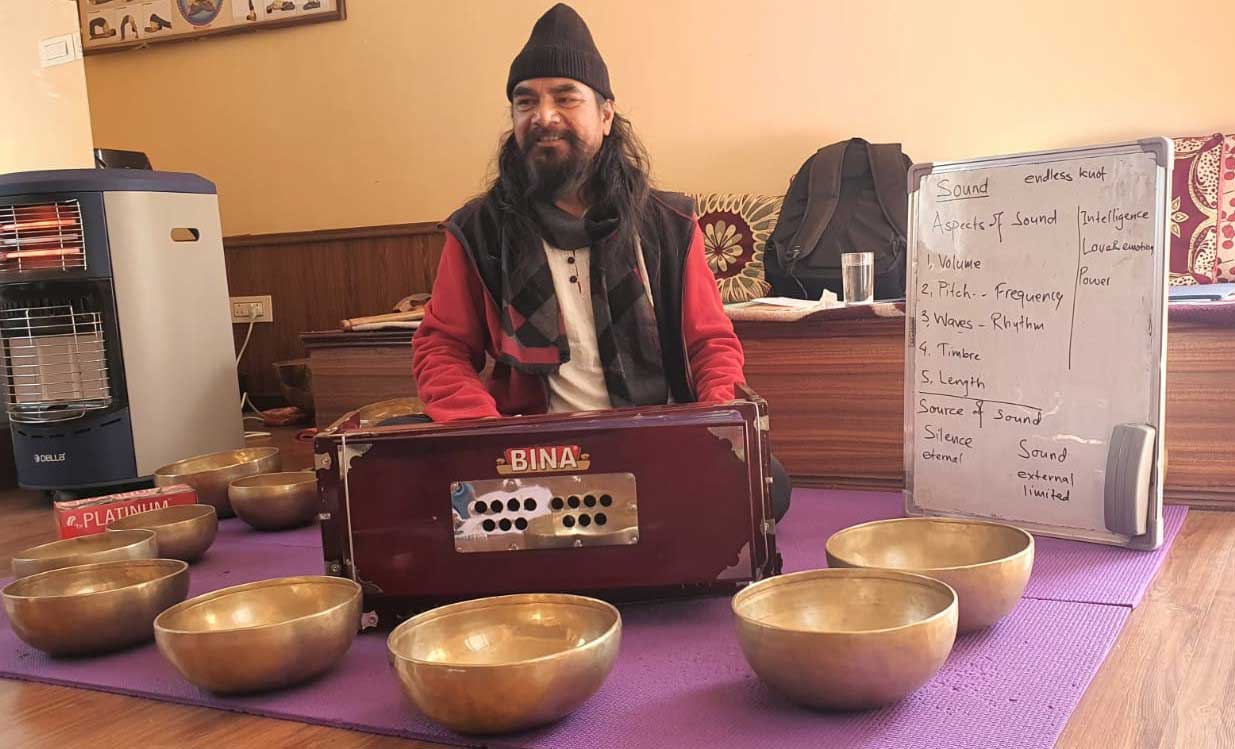

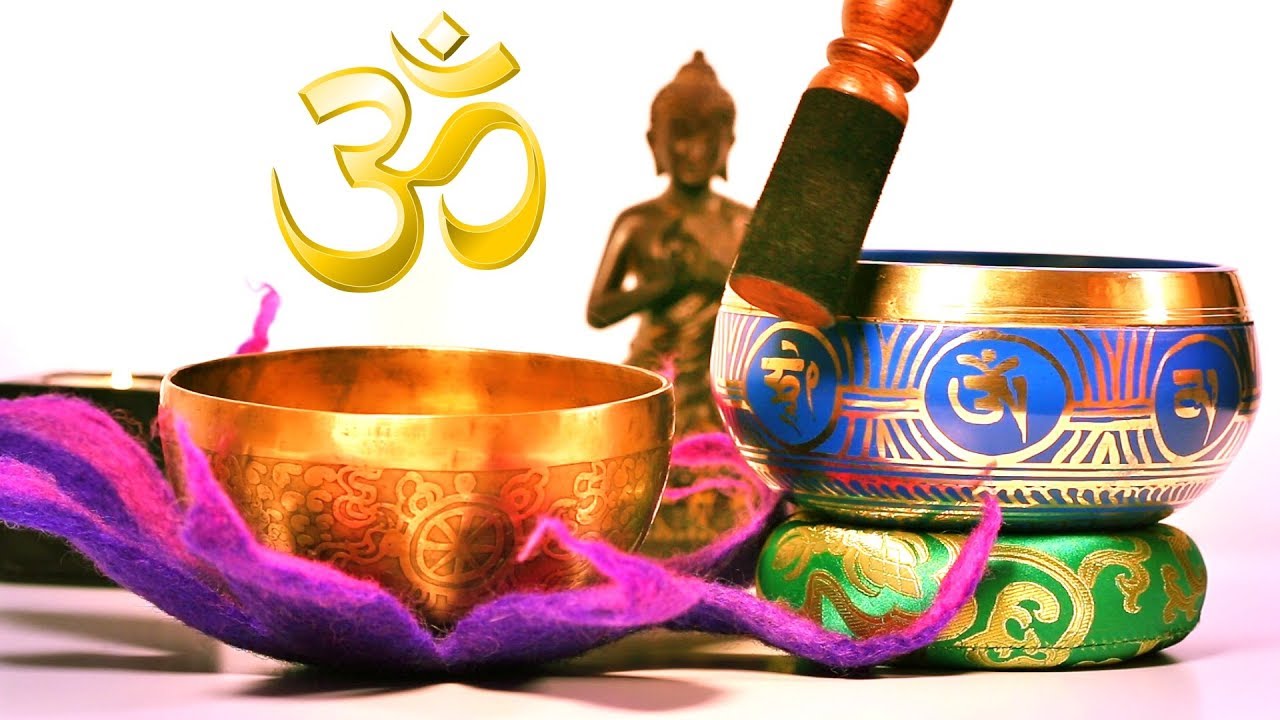
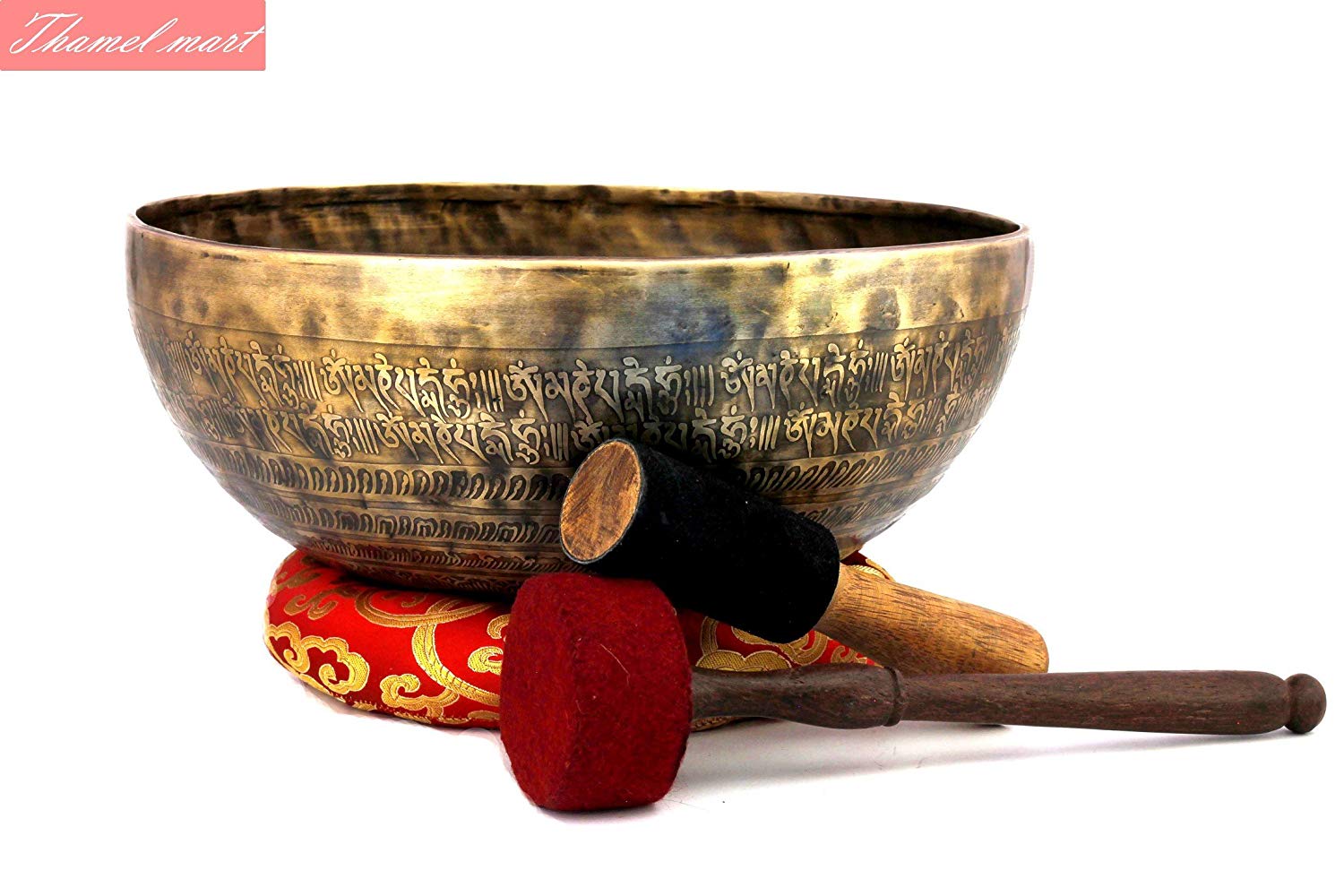

Tibetan singing bowl
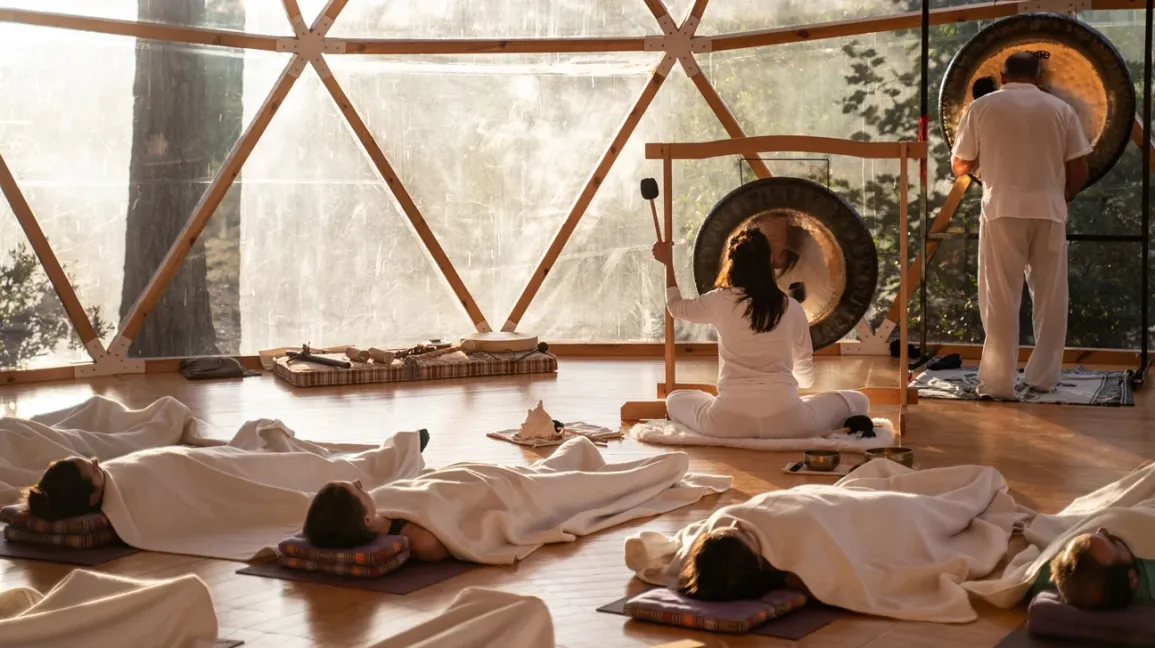
Who Can Join the Retreat
The Himalayan Yoga Academy welcomes all individuals who want to experience sound healing retreats which include yoga practitioners as well as energy therapists and wanderers who want deep spiritual encounters. You need no previous experience because the main requirement is to listen to external sounds and your internal silence.
Plan Your Sound Healing Journey in Nepal
The Himalayan Yoga Academy provides year-round flexible programs for participants who want brief rejuvenation stays or advanced sound healing training in Nepal. The retreat center stands close to forest, which offers visitors a peaceful environment that includes hills and temples and natural landscapes.
Discover the healing power of sound and allow it to tune your life into balance. Your body will feel vibrations which will show you that harmony exists as an inner state rather than an external quest.
Frequently Asked Questions (FAQs)
The Himalayan Yoga Academy provides a sound healing retreat which includes multiple services. Your retreat package offers daily yoga and meditation practices and guided sound healing sessions and vegetarian meals and comfortable lodging, and additional options for nature walks and Ayurvedic treatments. · I need to know if I require any previous yoga or sound healing experience. Not at all! The retreats are designed for all levels. Sound healing provides advantages to both new practitioners and experienced practitioners.
What is included in a sound healing retreat at Himalayan Yoga Academy?
The average retreat offers daily yoga and meditation sessions together with sound healing treatments from professional healers and vegetarian meals and shared living spaces and multiple optional activities which include nature walks and Ayurvedic treatments.
Do I have to have prior experience in yoga or sound healing?
The retreats welcome participants at every skill level. Your previous experience with yoga does not affect your ability to receive benefits from sound healing because this practice works for beginners and advanced practitioners equally.
What instruments are used in the sound healing sessions?
The healers employ various instruments which include Tibetan singing bowls and crystal bowls and gongs and bells and chanting mantras to create deep vibrations that promote relaxation and healing.
How long do the retreats last?
The length of retreats varies between different programs because some retreats last for three days and others extend up to twenty-one days based on your schedule and retreat goals.
Where is Himalayan Yoga Academy located?
Himalayan Yoga Academy is situated in Kathmandu Nepal at a peaceful hillside location that overlooks the valley and is an 7 km distance from Thamel (the main tourist area).
Can sound healing help with stress and anxiety?
Yes sound healing instruments create relaxing vibrations that slow brain levels and reduce cortisol levels creating relaxation so deep you can release stress and anxiety and insomnia.
How can I book a sound healing retreat in Nepal?
You can see the dates available on our official page, package details and personalized program options of Himalayan Yoga Academy Website or send an email or WhatsApp with would like to reserve a spot.
A Sound Healing Retreat exists as a complete wellness experience that guides participants through spiritual growth and emotional recovery. The qualified instructors from Himalayan Yoga Academy will help you find relaxation and renewal and rediscover your authentic self during this program.
So take a deep breath, answer the call of the Himalayas, and go where the healing sounds lead you to inner harmony.
The Magic of Pashupatinath: A Spiritual Experience in Kathmandu
The Pashupatinath Temple is built on the edge of the Bagmati River in Kathmandu. Its location is of such importance that Pashupatinath is the spiritual center of the nation while simultaneously being a UNESCO World Heritage Site. As such, the Pashupatinath Temple Complex has served as a retreat for many seekers and sadhus for many centuries, devoting their lives to the inquiry of higher planes of existence. Thus, for the people interested in the practices of yoga and meditation, Pashupatinath is not a normal tourist site, Pashupatinath is considered a unique site for teachings on the principles surrounding the cycle of childbirth, death and moksha.
When you enter through the gates of Pashupatinath Temple, you encounter the reality of yoga in the form of a living artwork. In it, the almighty Shiva is the focal point and the throne of the devotion, while simultaneously being the timeless guardian of India.
The Pashupatinath: The Lord of all beings
Among the many Pashupatinath temples, the most revered is the Jyotirlinga Pashupatinath. It is the Pashupatinath which dedicates himself to the Pashupat, his incarnation of the Lord of all beings, which is the most fundamental.
This refers to the Pashu subduing the base instincts through the inner Pati Pashu, the latent inner Pati Pashu – the divinity. The Pashu yogi seeks to subdue the mind and the senses to actualize the inner divinity who is peaceful in order to attain Self realization. The sacred mandir, with exquisite pagoda style architecture and gilt rooftops, possesses the holy lingam. Although entry to the inner sanctum is permitted only to the Hindus, the powerful aura of the Pashupatinath resonates throughout the entire complex, manifesting a sense of sanctity that is available to all.
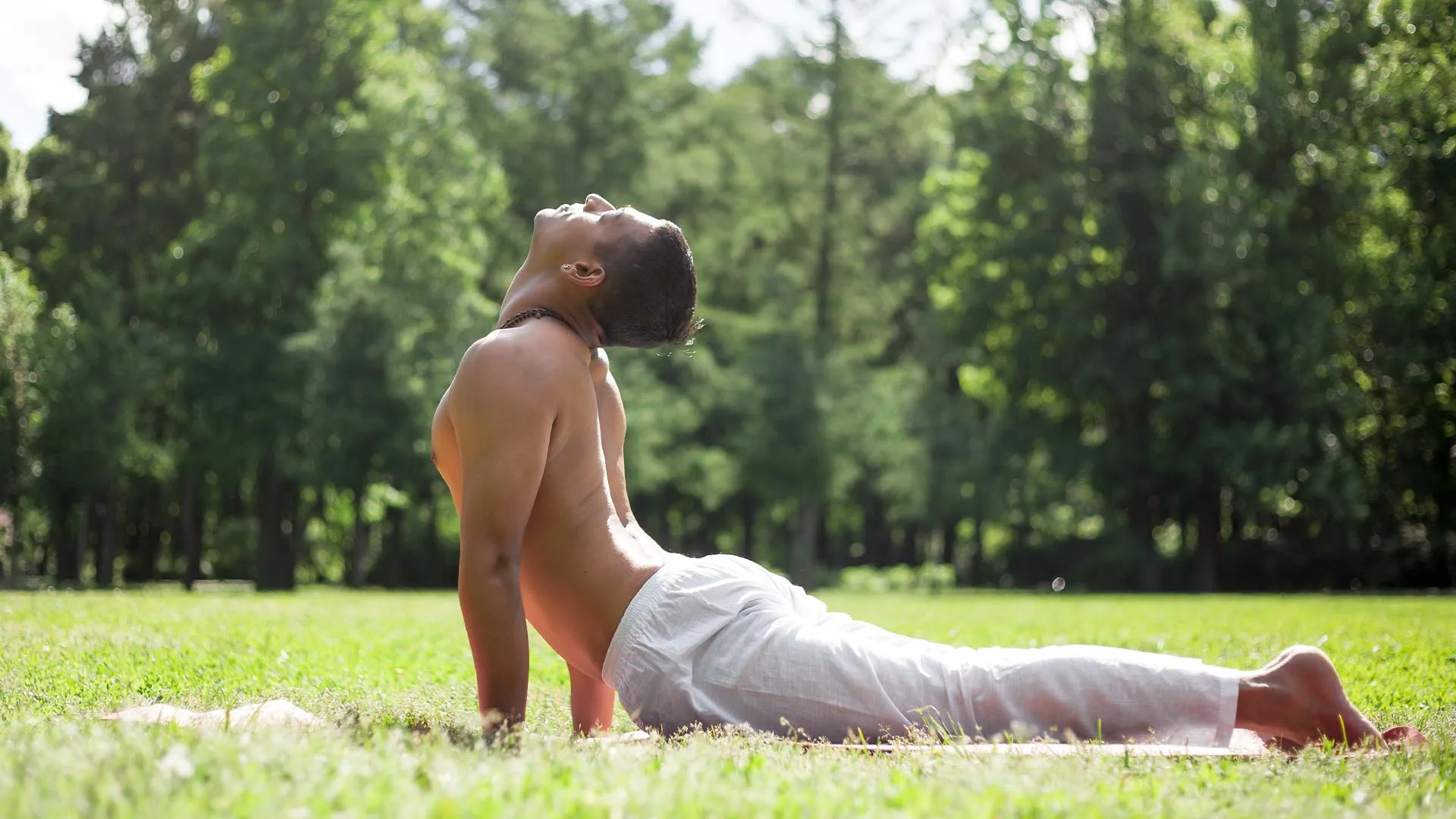
A Living Lesson in Impermanence and Detachment
A less distracted and bare influence of this Pashupatinath, and the most captivating part, is the open-air rest ghats and the cremation sites along the Bagmati River. While the funeral pyres and the ceremony to the dead might appear to be intense light, it is a clear direct lit glimpse of the yoga philosophy, divided into Eastern and Western sides, of Non-attachment, and the Philosophy of Illusion.
The sages of the ancient days used to say that to understand life, you must understand death. Watching the cycle of life and death at the ghats acts as a powerful motivator to live a purposeful life, practice detachment in devotion so as to unfold the squeezing that encloses the inner light and open to the more vibrant life beyond. You can see your practice Ram on the yoga mat yoga principles in action.
Sadhus: Paradigms of Renunciation
Your visit to Pashupatinath will most probably make you encounter the Sadhus: Hindu ascetics who left the material world in search of spiritual liberation. These ascetics, caked with ash, matted hair, and covered with colorful robes, are extreme wandering monks and are rubrics of the utmost commitment and devotion to their practice.
Interacting with a Sadhu, with the utmost care and in the proper manner, can be a fascinating encounter. The mere fact of their existence is a lesson in Vairagya, dispassion, and in Tapas, austerity, and their presence urges many to disengage from the ordinary and engage with the timeless.
A Place of Stillness and Contemplation
Beyond the main temple, the complex unfolds into a maze of small shrines, statues, and serene courtyards. Sit on the stone steps overlooking the river, and close your eyes. The river with its gentle yet powerful flow, the incense and marigolds, the rhythmic prayers, and the powerful chant of “Om Namah Shivaya” merge into a symphony, painting a landscape that sets the perfect atmosphere to incorporate the flow of spontaneous meditation on that river.
Planning Your Spiritual Visit: Suggestions for Yoga Practitioners
- Best time to visit: Early in the the morning and in the evening is the most spiritually enhance time.The Maha Shivaratri festival makes the temple a fascinating confluence of followers.
- Attend the Aarti: Attending the evening Aarti ritual beside the Bagmati River is a deeply immersive experience. The sound of the palms together with the chanting, the ringing of the bells, and the graceful movements of the diyas offers a profoundly empowering feeling.
- Customs Etiquette: Dress appropriately by covering your shoulders and knees with a shawl, and consider that the main temple area is reserved for Hindu devotees, the temple surroundings offer a rich experience.
- Mindfulness: Observe, without participation: the Sakshi Bhava, or the state of the silent witness. You are the subject as well as the object: rituals, others, and your thoughts without labeling any of them. This immersion, this observation is a meditation.
Incorporating your visit to Pashupatinath into your yoga practice is and offers a perfect opportunity to practice and share with others what is different.
In Himalayan Yoga Academy, it is our belief that yoga is a complete an all encompassing science of life and living, not solely the asana poses of yoga. A visit to Pashupatinath strengthens our yoga teacher training and silent meditation retreats in Nepal. You can:
- Reflect on the Philosophy: Observe the exercises of karma, dharma, and moksha as they take form.
- Enhance Your Meditation: Be in a place that offers stillness, and the capacity for deeper silence.
- Cultivate Compassion:The ability to empathize and fully understand someone else’s perspective is assigned to those who can look at life in all its facets.
The magic of Pashupatinath has to be the awakening of the spirit. It confronts, it consoles, and it heals. It is the most important part of the pilgrimage for any practitioner of yoga to the Himalayas.
Are you prepared to step into a pilgrimage of your own?
Begin your journey of self-discovery with our Yoga Teacher Training in Nepal and Meditation Retreats, designed to let you experience life-changing yoga that draws energy and wisdom from the roots of Pashupatinath.
Transformational Travel in Nepal | Changing lives through Yoga & Meditation
Transformational travel in Nepal is great for those who seek purpose and meaning in their travel – and their lives. Transformational travel offers more than just sightseeing; it gives you something beyond self-growth. A fun way to discover them is by travelling to places that offer meaningful experiences. Nepal is a country that is best suited to provide you that. Nepal’s serene landscape, rich culture, and deeply rooted spirituality make it great for achieving transformational travel.
If you’re one of those seeking transformational travel, the Himalayan Yoga Academy is great for you. Here, we provide guidance to the travellers on a peaceful journey of healing, mindfulness, and self-discovery. Our Academy, rooted in authentic yogic traditions and located in the blessed lap of the Himalayas, provides retreats and courses that create life-changing experiences.
Why is Nepal Perfect Destination for Transformational Travel
For Transformational Travel, you’ll find endless places to visit and activities to experience in Nepal. From serene spiritual sanctuaries, natural wonders, and cultural activities, you’ll find fun ways for your journey towards self-discovery here. Below are some major reasons to choose Nepal for a transformative journey:
1. A Living Heritage of Yoga & Meditation
Nepal is a country rich in culture and spiritual wisdom, making it more than just a travel destination. With the presence of important sites like Lumbini – a UNESCO-listed heritage, Nepal carries the essence of Yogic wisdom and soulful meditational practices. Whether you’re joining a yoga retreat, practicing meditation in monasteries or the Himalayas, Nepal is a great destination to embark on a journey of transformation.
2. The Healing Power of the Himalayas
What could be more peace-inducing than the beautiful Himalayas that reside in Nepal? Here, you’ll find the wonders that make you feel closer to yourself and the universe. Relaxing in the tranquil environment lets you feel the healing power of Nepal’s nature.
3. Authentic Teachers & Spiritual Lineage
Having an authentic experience is necessary for a true transformational travel. At a genuine Yoga retreat like Himalayan Yoga Academy, you’ll be guided by our experienced yoga masters. We have expert meditation guides with both traditional knowledge and international certifications. They make sure you have a safe and authentic transformative experience.
How Yoga & Meditation in Nepal Transform Lives
Experiencing authentic Yoga & Meditation in Nepal is a very fulfilling way to achieve a transformational journey. Here are some of the positive things they bring in our lives:

Emotional Balance:
We face various troubles in our daily lives that lead us to suffer from stress and anxiety. Through activities like Yoga & Meditation in the peaceful environment of religious, natural, and cultural centers, we can truly settle our mind into stillness and experience transformation in our lives.
Physical Vitality:
It is no surprise that our mental health greatly impacts our physical well-being. This clearly shows that Yoga and Meditation help to strengthen our physical health. Additionally, having these experiences in the tranquil environment of Nepal, such as the Himalayas, plays a bigger role in improving the body’s flexibility and restoring our energy.
Spiritual Awakening
Practicing in the sacred environment of religious places like Lumbini or Himalayan monasteries helps to connect us with the spirituality they offer. For seekers of spiritual growth, Nepal is a perfect place to practice authentic Yoga & Meditation.
Global Community
Nepal is a country where many seekers of transformational travel gather. Like-minded people from around the world come together, share their experiences, and learn together. This is an excellent way of forming friendships and having cultural exchanges.
Experiences at Himalayan Yoga Academy
At Himalayan Yoga Academy, you can expect more than just genuine classes. You’ll experience authentic learning for your transformational journey. With great teachers and a wonderful learning environment, we offer professional training courses and programs designed to meet diverse needs. You can find out more about us by clicking here.
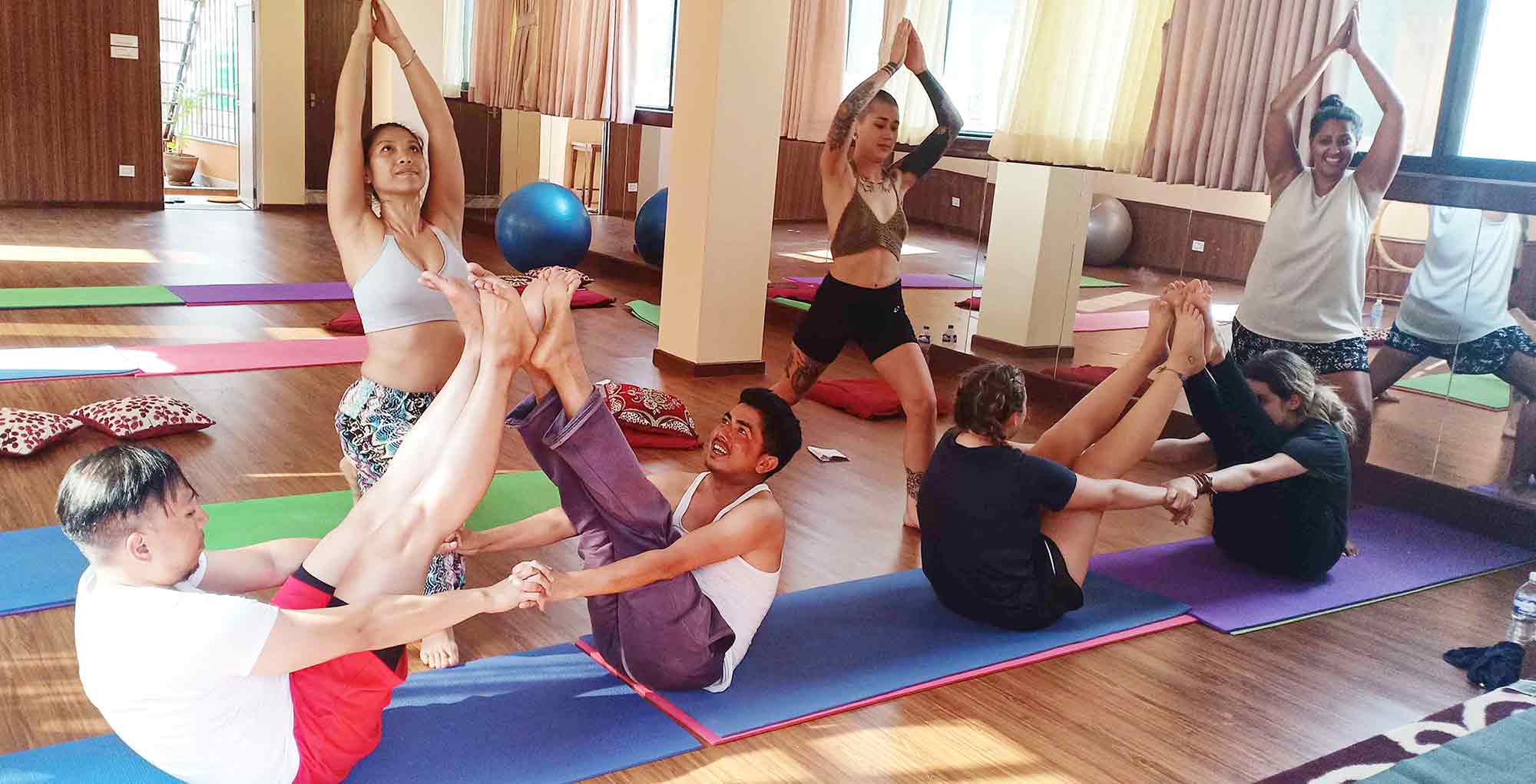
Residential Yoga Retreats
To take a break from daily digital distractions, we have several retreat programs ranging from a 3-day digital detox to month-long yoga immersions in the peaceful environment of Nepal. This offers a perfect blend of relaxation and a transformative journey
Meditation Programs
With us, you’ll experience different kinds of Vipassana-inspired, and other guided meditation. When led by our experienced teachers, it’ll clear your head and help you obtain personal growth.
Yoga Teacher Training (200/300)
Our teachers, certified by Yoga Alliance, will provide you with the best training you are seeking to experience a transformational journey. Our licensed trainers combine their traditional wisdom with modern teaching methodology. You can explore the Yoga Teacher Training Pages to see how they transform your journey.
Detox & Wellness Packages
Refresh your mind with the yogic lifestyle practices taught at Himalayan Yoga Academy. Here, we have incorporated Ayurveda and naturopathy, designed to provide you with an ultimate transformational experience.
Here’s what a participant from Australia has to say about their experience with us – “The experience at Himalayan Yoga Academy changed my perspective on life. I found balance, clarity, and a sense of purpose.”
Transformational Travel in Nepal – FAQ for Travellers
Q1. Why choose Nepal for yoga and meditation?
Nepal is considered one of the best destinations because of its natural and spiritual essence. Practicing Yoga & meditation in the serene landscapes surrounded by the grand Himalayas is the best way to rejuvenate and experience transformation in life.
Q2. Do I need prior yoga experience to join Himalayan Yoga Academy?
Absolutely not. Your prior experience becomes the least of your worries when our certified practitioners carefully adapt every session according to your personal level. We welcome you with open arms and promise you a safe, transformative experience.
Q3. How long should I plan my transformational journey?
Honestly, it depends on your goals. You can plan your trip for a 3-day retreat if you want a short transformational journey. If you want a longer detoxing experience, you can choose our 200-hour yoga teacher training courses in Nepal.
Q4. Is Himalayan Yoga Academy certified?
Absolutely. We are a genuine, certified Yoga Academy dedicated to providing international standards of teaching and authenticity in Nepal. Himalayan Yoga Academy is internationally recognized by Yoga Alliance, ensuring you a soulful retreat in Nepal.
Why choose Himalayan Yoga Academy
Having good guidance on the yoga and meditation journey is important. At Himalayan Yoga Academy, we ensure to give you the very direction you are seeking to have a truly transformative journey. Here are some of the reasons why travelers choose us:
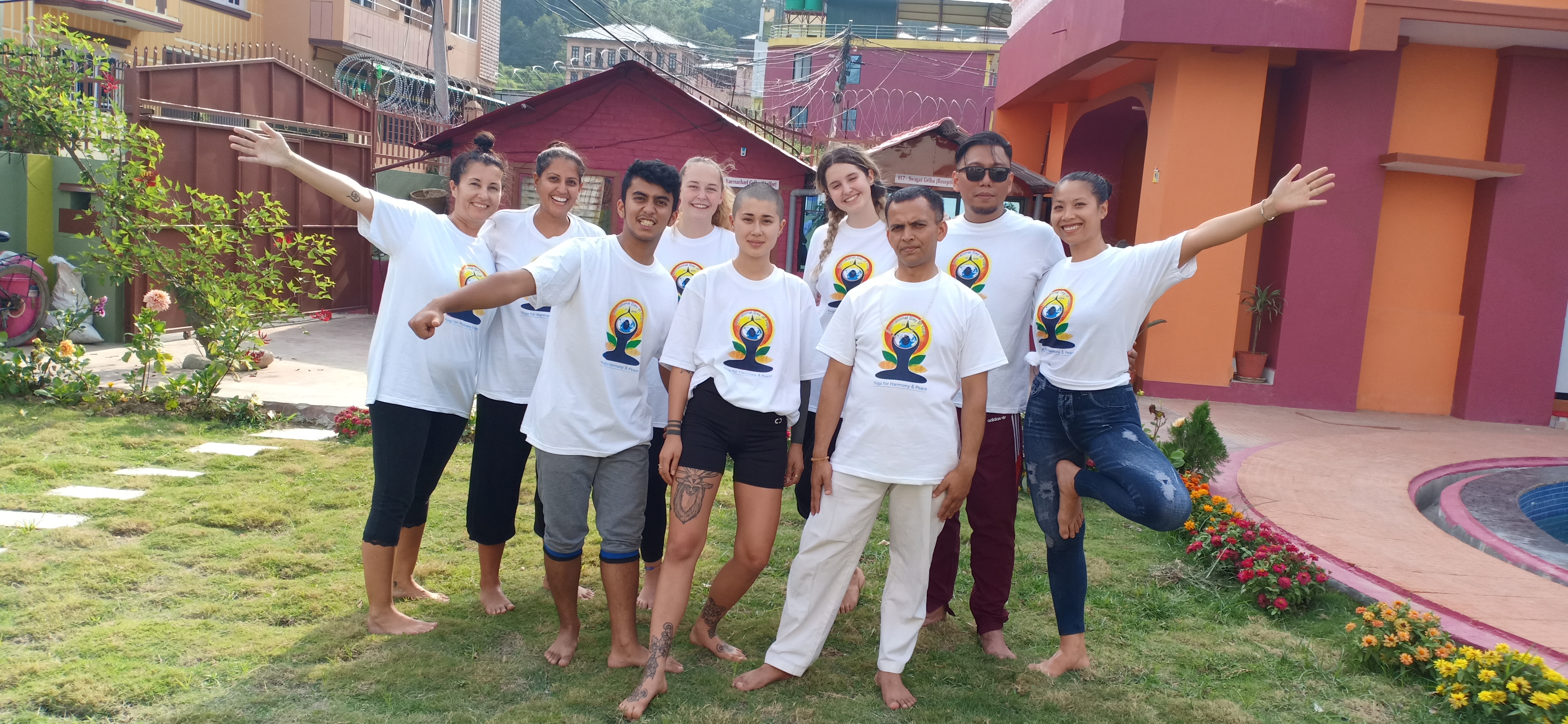
Experience:
Our teachers have excelled in their practice of yoga and meditation with decades of experience. They are quite skilled at creating a safe and comfortable space for students to have a great learning experience.
Expertise:
Our licensed practitioners combine traditional yogic philosophy with modern teaching methods to help you obtain the maximum benefit from your classes with us.
Authoritativeness:
As we are certified by Yoga Alliance, we make sure to uphold international standards. We are an authentic Yoga Academy, trusted by thousands of International students.
Trustworthiness:
We make sure to uphold the integrity with transparent program details and authentic reviews. We are committed to making your well-being our priority. So you can definitely trust us to give you an unforgettable and safe transformative experience in Nepal.
Find out more About Us and our journey.
Your Transformational Journey in Nepal Awaits
Transformational travel is more than a journey – it’s a unique experience to build a deeper connection with the universe and yourself. It’s an awakening of both body and mind. Embark on this journey to grow and heal with us at Himalayan Yoga Academy in Nepal. We promise you authenticity and ensure you’ll return home with peace, clarity, and unforgettable memories of Nepal.
If you’re seeking a truly transformative journey in the heart of the Himalayas, we warmly invite you to join us at Himalayan Yoga Academy in Nepal.
May your transformative journey in Nepal be fulfilling and unforgettable!
The Ultimate Checklist for Your Yoga Teacher Training in Nepal: Prepare Body, Mind & Spirit
The Ultimate Checklist for Your Yoga Teacher Training in Nepal
Embarking on a 200-hour Yoga Teacher Training in Nepal is a transformative decision that will stay with you for a lifetime. Nestled in the heart of the Himalayas, Nepal offers a profound backdrop for deepening your practice. However, preparing for a month of intensive study requires more than just booking your flight.This holistic checklist is your essential guide to preparing your body, mind, and spirit for your Yoga Teacher Training in Nepal. We’ll cover everything from academic prep to exactly what to pack for the variable Himalayan climate.Here we will provide Checklist for Your Yoga Teacher Training in Nepal
Why Prepare Holistically for YTT in Nepal?
A YTT is an immersive experience. Proper preparation allows you to fully surrender to the process without unnecessary stress. By arriving mentally ready and physically equipped, you can focus on what truly matters: your growth, learning, and transformation.
Part 1: Mental, Physical & Practical Preparation (Before You Arrive)
This is the most crucial phase of your preparation. Taking these steps will ensure you hit the ground running when you arrive at your yoga school in Nepal.
Deepen Your Personal Practice
- Establish Consistency: Don’t worry about being perfect. Focus on building a regular practice to familiarize your body with key asanas, especially Sun Salutations (Surya Namaskar).
- Explore Basics: Get comfortable with basic pranayama (breathing techniques) and meditation. Even 10 minutes a day makes a difference.
Academic Reading & Study
The philosophical teachings are a core part of any YTT in Nepal. Getting a head start will help you absorb the deep concepts more easily.
- The Yoga Sutras of Patanjali: This is the foundational text of yoga philosophy. Find a good translation and commentary.
- The Bhagavad Gita: This epic poem provides incredible insights into the paths of yoga and living a yogic life.
- Sanskrit Terms: Familiarize yourself with basic Sanskrit names for common poses (e.g., Tadasana for Mountain Pose).
Physical Readiness
- Build Stamina: Gentle hiking, swimming, or bodyweight exercises are excellent for building the core strength and stamina you’ll need for twice-daily asana practices.
- Medical Check-up: Inform your doctor about your travel and training plans, especially if you have any pre-existing conditions.
Essential Travel Logistics
- Passport & Visa: Ensure your passport is valid for at least 6 months. Most nationalities can get a tourist visa on arrival at Kathmandu’s Tribhuvan International Airport.
- Travel Insurance: This is non-negotiable. Your policy must cover emergency medical evacuation, trekking at high altitude, and trip cancellation.
- Vaccinations: Consult a travel doctor. Hepatitis A & B, Typhoid, and Tetanus are commonly recommended.
- Finances: Inform your bank you’ll be in Nepal. Bring a mix of USD (easy to exchange) and a Visa/Mastercard debit/credit card. ATMs are available in cities.
Set Your Intention (Sankalpa)
Reflect on your why. Why are you drawn to a yoga teacher training in the Himalayas? Setting a clear intention will guide you through the challenging and rewarding moments of your course.
Part 2: What to Pack for Yoga Teacher Training in Nepal
The key to packing for Nepal is layering. Weather in the Himalayas can change instantly. Pack light—laundry services are affordable and readily available.
Clothing: Modest, Quick-Dry, and Versatile
- Yoga Wear: 4-5 breathable tops and 4-5 pairs of full-length leggings or pants. Modesty is valued, so shoulders are often covered outside the practice shala.
- Comfortable Casual Wear: Loose-fitting pants, long skirts, t-shirts, and long-sleeve shirts for lectures and exploring.
- Warm Layers: A fleece jacket, a lightweight insulated jacket (down/synthetic), and warm socks. Mornings and evenings can be chilly.
- Rain Gear: A compact rain jacket or poncho is essential, especially if your training is during the monsoon or shoulder seasons.
- Swimwear: For retreats or if your accommodation has a facility.
- Footwear: Sturdy hiking shoes for excursions, comfortable sandals for the ashram, and maybe lightweight sneakers.
Essential Yoga Gear
- Yoga Mat: While We provide yoga mats, bringing your own non-slip mat is highly recommended for hygiene and personal comfort.
- Yoga Mat Towel: A microfiber towel is great for sweatier practices and doubles as a quick-dry shower towel.
- Props: Most Nepal yoga schools provide blocks and straps. Check with your academy. If you have specific needs, consider bringing your own meditation cushion (zafu).
Health & Toiletries
- Personal First-Aid Kit: Band-aids, antiseptic wipes, and cream.
- Prescription Medications: Bring a full course, along with a copy of your prescription.
- Supplements: Vitamins or probiotics to support your immune system.
- Biodegradable Toiletries: Soap, shampoo, and conditioner. (Available locally, but bring your favorites).
- High-SPF Sunscreen & Lip Balm: The sun is strong at altitude.
- Insect Repellent: Crucial for evenings.
- Reusable Water Bottle: Stay hydrated and reduce plastic waste.
Study & Miscellaneous Items
- Journal & Notebooks: You will want to write down teachings, sequences, and personal reflections.
- Daypack: For carrying water, layers, and books on excursions.
- Headlamp/Flashlight: Essential for power outages and early morning practices.
- Universal Power Adapter: Nepal uses Type C, D, and M plugs (220V/50Hz).
- Earplugs/Sleep Mask: A lifesaver for light sleepers in shared accommodation.
Part 3: What to Leave Behind (The Most Important Part)
Your yoga journey in Nepal is about simplification and introspection. To make space for the new, leave these things behind:
- Expectations: Let go of what you think the experience should be. Be open to what it is.
- Judgment: Release judgment of yourself and others. Everyone is on their own path.
- Unnecessary Valuables: Leave expensive jewelry and non-essential electronics at home.
- A Closed Mind: Arrive ready to learn, share, and be transformed.
Ready for Your Journey?
Preparing with this checklist will allow you to step onto your mat in Nepal with confidence and clarity. We are excited to welcome you to the Himalayas and guide you on this incredible path of becoming a yoga teacher with Himalayan Yoga Academy and deepening your own sadhana (practice).
Namaste!
The Connection Between Nepalese Culture and Holistic Wellness
The Himalayan Yoga Academy located in the Nepalese foothills presents a wonderful inquiry regarding what distinguishes yoga and meditation practices here. The uniqueness of our yoga and meditation practice does not stem from the exactness of a Tadasana or the peacefulness of meditation. It’s part of the very warp and woof of the air, smiles, and rhythms of our day. The real charm lies in the deep link between Nepalese culture and holistic well-being.
This isn’t just something we teach, it’s the land we stand on and the inheritance we treasure. We will dive deep into this subject together.
Holistic Wellness: A Way of Life, Not a Trend
The modern wellness trend fails to match the authentic lifestyle approach of holistic wellness. The first step to understand wellness requires us to shift our perspective about the concept. In Western culture wellness exists as a checklist of activities which include gym workouts and green juice consumption and meditation applications. The people of Nepal practice wellness through an ongoing integration of activities which forms their continuous lifestyle. True health exists as a balanced unity which connects physical wellness with mental wellness alongside spiritual wellness and communal wellness.
Nepalese cultural foundation rests on this philosophy which manifests through traditional customs as well as spiritual beliefs and regular daily practices.
1. The Philosophical Foundations: Buddhism and Sanātana Dharma
Nepal is where Lord Buddha took birth; it is also a holy site for the traditions of the teachings of Hinduism (Sanātana Dharma). They are more than religions, they are complete paths of living a balanced, meaningful, kind lifestyle. The Meaning of Dharma: Your dharma is your purpose or your right duty.
The Meaning of Dharma: Your dharma is your purpose or your righteous duty. Living a life aligned with your dharma decreases the internal struggle you feel and creates deep satisfaction and fulfillment to the life you live. This is the ultimate state of mental wellness.
The Middle Path: Buddha’s teachings on the Middle Path or the Middle Way and avoiding extremes is an excellent lesson on balance. The Middle Path teaches moderation in all things: food, work, thought. This is the center point of living a holistic lifestyle.
Compassion (Karuna) and Non-Violence (Ahimsa): These important principles call on us to show compassion to all, including ourselves. The more love and compassion we show to others the healthier community we create and that also diminishes stress and anxiety on our inner dialogue.
At our academy, our yoga teacher training in Nepal is not simply about teaching postures or asana. We teach you about the philosophy behind the potential change your postures have. Not only do you learn the pose, but you learn the why; the moral and, spiritual principles that contribute to making it a transformational tool for life!
2. Everyday Life in Nepal includes Rituals which are really effective mindfulness practices.
Puja (Prayer): Practicing a daily puja (prayer) that includes lighting a lamp, making flower offerings, and chanting mantras is a focused time of gratitude and connection to the divine. A puja brings centering of the mind before the workday begins.
Festivals as Community Healing: Nearly every day of the year in Nepal is a festival day! Festivals such as Dashain, Tihar, and Buddha Jayanti, and others, are not just celebrations, they offer significant opportunities to connect with the community, forgiveness, play, and cultural affirmation. These are important for our social and emotional health.
The Sound of Mantras and Singing Bowls: Sacred Chants, and Tibetan bowls have been used for centuries. The vibrations soothe the nervous system, orient the mind and heal the trauma.
3. The Wisdom of Ayurveda and Natural Healing
Nepal sustains its medical resources as a result of biodiversity. Ayurveda is the life science that has taken residence in every Nepalese home.
Food as Medicine: The traditional Nepali dal bhat works as a whole nutritional system that energizes and aids in digestion, sustains the individual. Meals are freshly harvested local ingredients accompanied by healing spices like turmeric, ginger, and cumin.
Herbal Remedies: Understanding local herbal therapies has been inherited lineage by the people of Nepal. Consider ajwain (for digestion) and giloy (for immunity). They trust natural intelligence.
Our programs incorporate this wisdom. Our Ayurvedic workshops and sattvic meals avail the guest of how concrete benefits can emerge from ancient dietary science into the body from within.
4. The Importance of Place: The Himalayas
The landscapes of Nepal form an inseparable bond with the nation. The powerful Himalayas are not a background; they are deeply woven into your wellness pursuit.
A Symbol of Strength and Stillness : The mountains display both power and stillness through their teachings of enduring strength and steadfastness. When we observe them we instantly develop a sense of awe that makes our personal challenges seem insignificant.
Pranayama amplified: The fresh and clean atmosphere in the mountains serves as a vital element for performing pranayama practices (yogic breathing exercises). The complete lung cleansing and body revitalization occurs when you fully inhale the pure mountain air.
Feel the Connection with Us
The Himalayan Yoga Academy exists both physically and spiritually from Nepal territory. Our organization provides you access to authentic cultural wellness experiences through our bridge platform.
Our Yoga Teacher Training Course together with meditation retreats and wellness workshops fully integrate cultural elements. The following activities will be available to you:
- Practice yoga with the Himalayas as backdrop,
- Learn from local gurus and Nepalese teachers who embody this wisdom,
- Experience ancient rituals, and sacred sites,
- Eat healing, traditional food,
- Become part of a welcoming, spiritual community.
Learning a practice differs from living a tradition, since this represents the true difference between them.
Wellness that touches your soul is waiting for you to experience. The core nature of Nepalese cultural traditions allows for the transformation of the understanding of wellness, as well as happiness and peace.
Take a look at our upcoming programs that will help you begin your wellness journey with us.
[Click here to view our Yoga Teacher Training in Nepal]
[Click here to view our Meditation and Retreat Offerings]
About the Author: This article was crafted by the Himalayan Yoga Academy team from Spiritual Kathmandu, Nepal. Our lead instructors are so-called yoga masters certified with decades of experience, and rooted in Nepalese Hindu and Buddhist traditions. We take inspiration from the ancient legacy of our home so that we can provide culturally authentic genuine transformative wellness experiences.
Feel the Healing Energy of the Himalayas : Why the Yogis Flock Nepal
A Land Where the Mountains Breathe
Nepal also known as the Himalayas where you can find inner peace and peace of mind. This place is popular not only for views and scenes, but also for healing energies and unlocking chakras. As we travel through the Himalayas, we’ll discover why Nepal and these Himalayas are main sources to unlock your healing powers. For centuries, yogis, spiritual seekers, and travelers have been coming to Nepal in the center of the Himalayas for higher consciousness and inner peace.
Here at the Himalayan Yoga Academy, we have invited students and practitioners from around the world to experience this sacred energy for themselves. From the stillness of Himalayan dawns to the gentle whisper of prayer flags in the breeze, these mountains are not scenery, they are teachers.
The Spiritual Importance of Nepal in Yogic Cultures
Nepal is popular as Spiritual place, land of gods and Land of the Himalayas worldwide. As It is the birthplace of lord Buddha, Mt. Everest thousand of sacred temples, monasteries, stupas, monks and yogis this could be final destination for the traveler who seek for spiritual knowledge.
Nepal, the place with many cultures and sacred temple, it is indeed connected to ancient yogic practices and philosophy. Travelers can explore themselves in rituals and ceremonies that have been handed down the centuries by generation to generation with the divine connection.
The spiritual masters also known as yogis who have inhabited in Nepal from centuries leaves the mark as a center for spiritually all the more certain. The originator of Hatha Yoga, Guru Gorakhnath have left their mark on the spiritual community and still inspiring new generations. In Nepal, the combination of Hinduism and Buddhism offers a special spiritual experience that allow seekers to self-explore and gain unique knowledge about spiritual power and unlock its source.
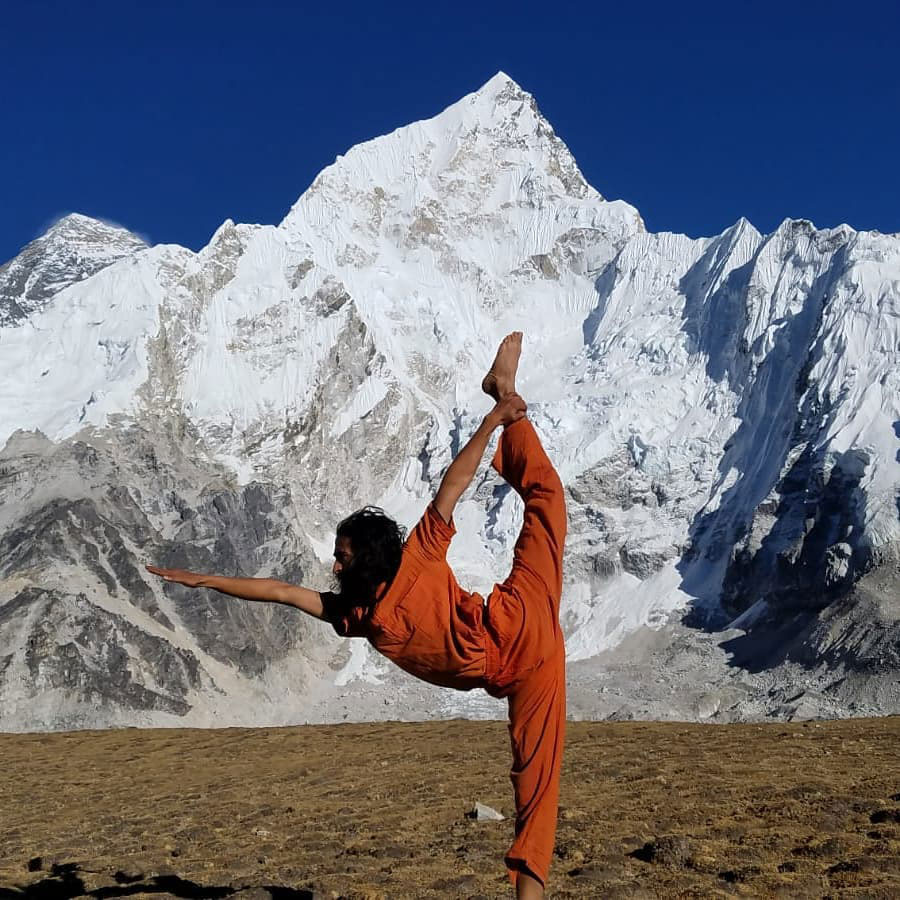
The Harmony Between Nature and Inner Peace
Nature and Inner Peace are too related with each other. It’s like to achieve inner peace you have to be in nature. And there is no better place than the Himalayas. Where you can be in nature and also achieve inner peace. Nepal’s mountainous peaks, verdant valleys, and crystal streams makes you feel peacefulness and mindfulness. Inspiring beauties of mountains evoke a sense of awe and respect. The wonderful beauty of nature is powerful and spiritual for them who seek for inner peace.
Surrounded by Mountain peaks and natures melt your all stresses and distraction of modern life. Fresh Air and nature sound of waterfalls and birds creates a perfect environment to meditate and find yourself. The energy of the Himalayas is said to be healing unto itself and revive your body, mind and soul.
According to Scientific study, Nature is an only way to heal your mental and emotional well-being. It will reduce your stress, decrease blood pressure and improve mood instantly. Thus, yoga and meditation is perfectly suited for your inner and outer health. The combination of nature and spiritually in the Himalayas provides life-changing experience that you can ever able to experience.
Top Yoga Retreat Destinations in Nepal
Nepal is a place for yogis to live and for the travelers who seek for spiritual development and healing. It provides houses and ashrams that suits for beginners to expert.
1. Kathmandu Valley
The cultural heart of Nepal, Kathmandu Valley features many yoga centers and wellness retreats. Surrounded by historic temples and vibrant markets, it offers a unique blend of tradition and modern yoga practice.
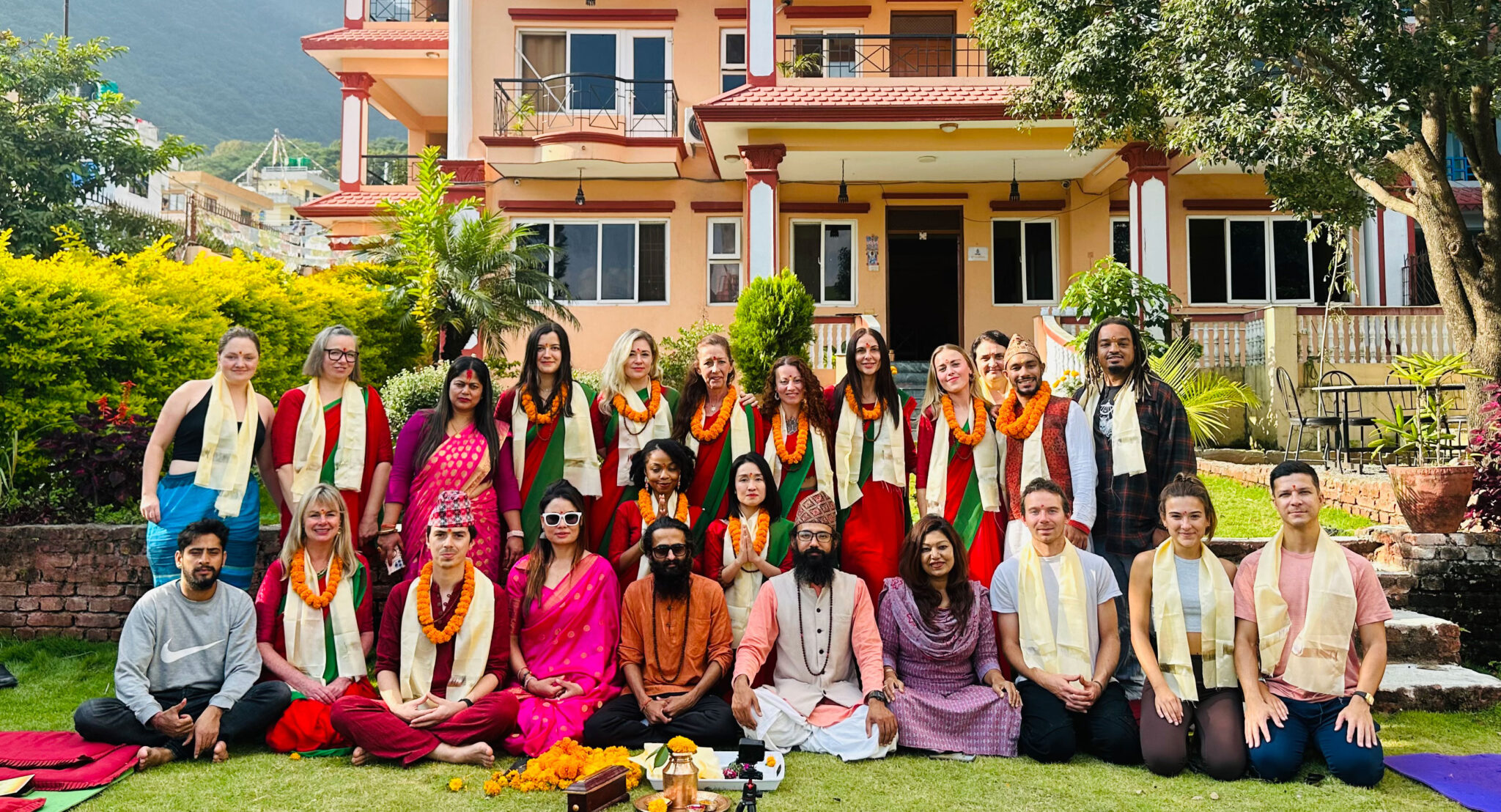
2. Pokhara – The Lake City of Serenity
Surrounded by the Annapurna range and set beside the tranquil Phewa Lake, Pokhara offers countless retreat centers with stunning sunrise views over Machhapuchhre (Fishtail Mountain). Himalayan Yoga Academy organizes seasonal retreats here for both beginners and advanced practitioners.
3. Namobuddha – Sacred Monastic Peace
A short drive from Kathmandu, Namobuddha is home to ancient monasteries and Buddhist hermitages. Perfect for silent meditation retreats and deep inner work.
4. Lumbini – The Birthplace of Buddha
While not mountainous, Lumbini’s spiritual energy is unmatched. Many retreats here focus on meditation and Buddhist philosophy, making it a worthwhile addition to any yoga journey.
The Role of Meditation and Mindfulness in Healing
Meditation and mindfulness is important for both physical and emotional health. It enhances and helps you find the cure naturally. The nature and fresh peaceful environment will heal your body and soul so effectively that you will find inner peace and experience heaven.

According to Scientific research, meditation and mindfulness plays various roles on mental health. If you do it regularly, it also helps you to reduce depression, anxiety and stress, as well as improve cognitive function and emotional regulation. Meditate helps you to active parasympathetic nervous system, relation and reduce physiological effects of stress. Mindful breath work and body scan meditation is also good to achieve greater body sensitivity and emotional resilience. With the environment of nature and Himalayas, this meditation unlock even more power, and it will be more effective for healing and self explore.
Best Time to Visit Nepal for Spiritual Retreats
Choosing the best time to visit Nepal can enhance the experience and helps to explore nature even further. You have to check climate changes and other condition first. The ideal time to travel Nepal and go for adventure are the pre-monsoon (spring) and post-monsoon (autumn) seasons.
| Season | Weather & Experience | Recommendation |
|---|---|---|
| Spring | Mild, blossoming nature | Highly recommended |
| Autumn | Stable, festive, clear views | Highly recommended |
| Winter | Cold, peaceful, fewer tourists | Good for indoor retreats |
| Monsoon | Wet, risky travel conditions | Not recommended for outdoor retreats |
At Himalayan Yoga Academy, we guide every participant through these essentials to ensure a safe and rewarding experience.
Frequently Asked Questions (FAQ)
Q: Must I be an advanced yogi to participate in the retreat of Himalayan Yoga Academy?
A: Nobody is too rusty — many of our programs are designed for amateurs, and you will be guided with intentional introduction.
Q: Is practicing yoga at a high altitude course safe?
A: Yes, if you acclimate correctly and use attractive attention to your frame. All participants are supervised by our instructors to ensure their safety and comfort.
Q: What is the ideal length of time to visit?
A: We suggest 7-10 day plan to Acclimatize, daily practice and cultural encounter.
Q: Are retreats expensive?
A: We provide a variety of options from budget shared housing to, high end eco-lodges – and students may select the appropriate one for themselves.
Conclusion – Let the Himalayas Heal You
In other words, the Himalayas is not about pretty views – it is transformative. Surrounded by these mountains, yoga is not just an exercise anymore; it becomes a lifestyle.
Nepal We believe at HYA that Nepal is not a place – it’s an oasis, Inhaling vitality & exhaling insanity of stillness and silence. and sooner or later, the mountains persist whether you stay a week or a lifetime.
